Podcast: A Healthy Dose
On A Healthy Dose, Partner Steve Kraus and his co-host and friend Trevor Price of Oxeon Partners interview experts, leaders, and practitioners on the state of the healthcare industry. In this special mini-series, they speak with the experts on the pandemic outbreak.
Reena Pande on building a web and a safety net of connections
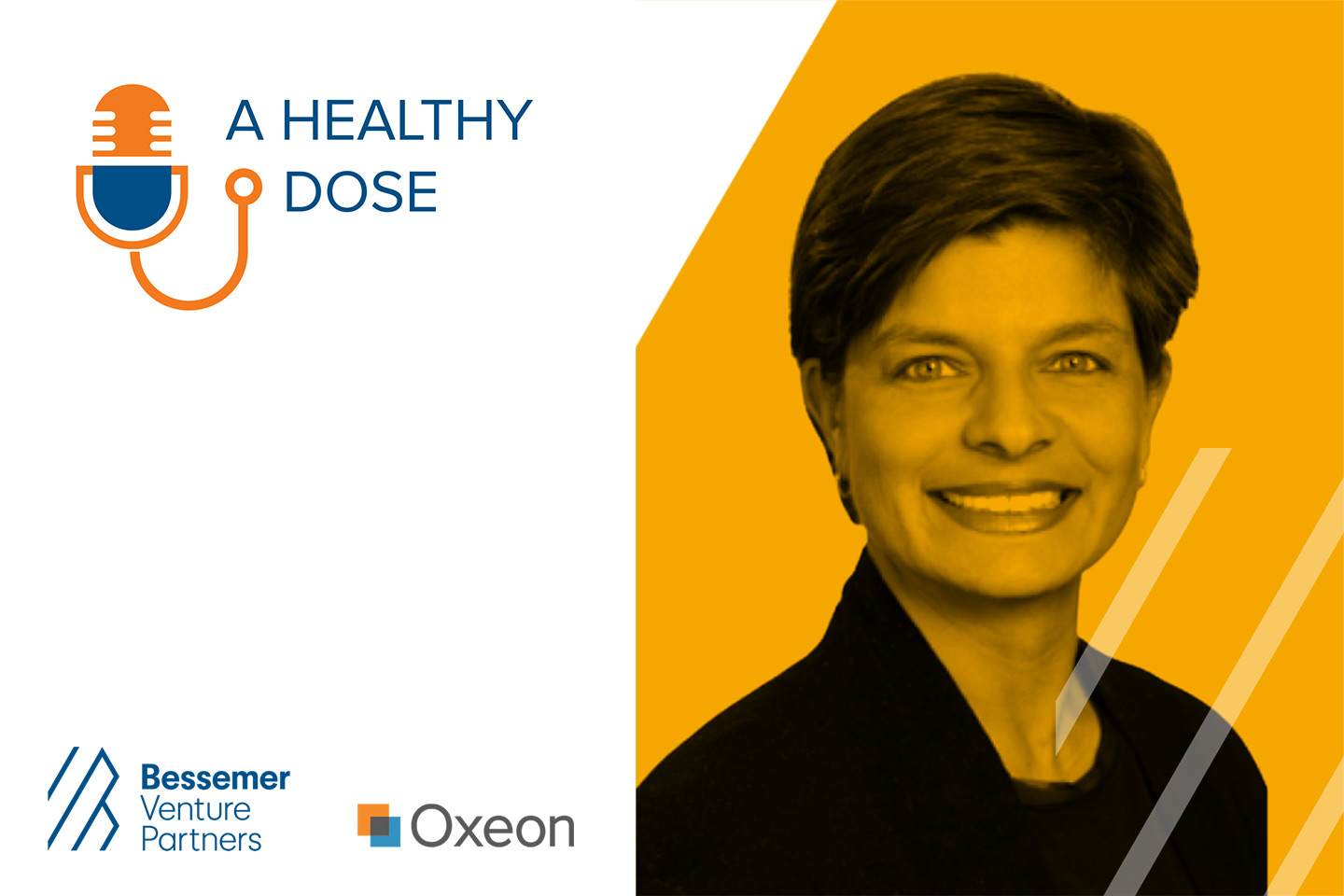
Reena Pande, Chief Medical Officer of AbleTo, sits down with Steve and Trevor to discuss how COVID-19 has affected our mental health, the misperception that you can’t measure mental health, how to hire a chief medical officer, and more.
Key takeaways include:
- The surprising way that COVID 19 has impacted feelings of loneliness: “Several years ago, we were really interested in studying social isolation and loneliness,” Reena noted. “Pre-COVID-19, interestingly enough, we were already measuring this in advance of the pandemic. In our oldest population, we actually saw a slight decrease in loneliness and social isolation, ironically. We had some theories–we're all calling our parents every day, we're doing Zoom calls with our entire family, and all of our older adult family members were probably, in a way, less socially isolated or emotionally isolated than they were previously.”
- Debunking the misperception that you can’t measure mental health: “I think it's a misperception that there isn't something you can measure,” Reena said. “There's this sense that it's vague and intangible, and a lot of it is. Not to suggest that a lot of mental health isn't. But we can measure symptom severity. There are scales. There are validated metrics that we can use. I think it's more of a challenge of the practice patterns of not being used to measuring, and using measurement-based care to guide evidence based interventions.”
- What’s next for mental health initiatives: “I think now it's complete chaos and confusion, because there's so many solutions. And payers, employers, and at the end the patient is going, ‘What do I need?’” Reena shares. “And so I think the next step that the space needs to graduate to, is really helping the patient, the employers, the payers, whomever it may be, navigate to the best next step for the patients. So there are good clinical guidelines on when you should start with therapy, or when you should start with a combination of therapy plus meds, or in some cases meds alone, or start with therapy and then move to meds if therapy is ineffective in meeting the goal you seek, like around treatment for anxiety, as an example.”
- How to hire a chief medical officer: “The trick is to really be clear on what you need, and then find a CMO that fills that need,” Reena advised. “I've played, as I was just starting to say, a ton of different roles. Some CMOs are more product oriented. There are some that are going to be more sales and marketing oriented. You need the graviton of the doctor sitting in the room across from your medical director at a health plan. That's a different type of CMO. And someone has to be comfortable selling. I feel like everything we do in medicine is selling, even if docs say they don't do that.”
Mike Pykosz on building a system that provides quality care for the Medicare population
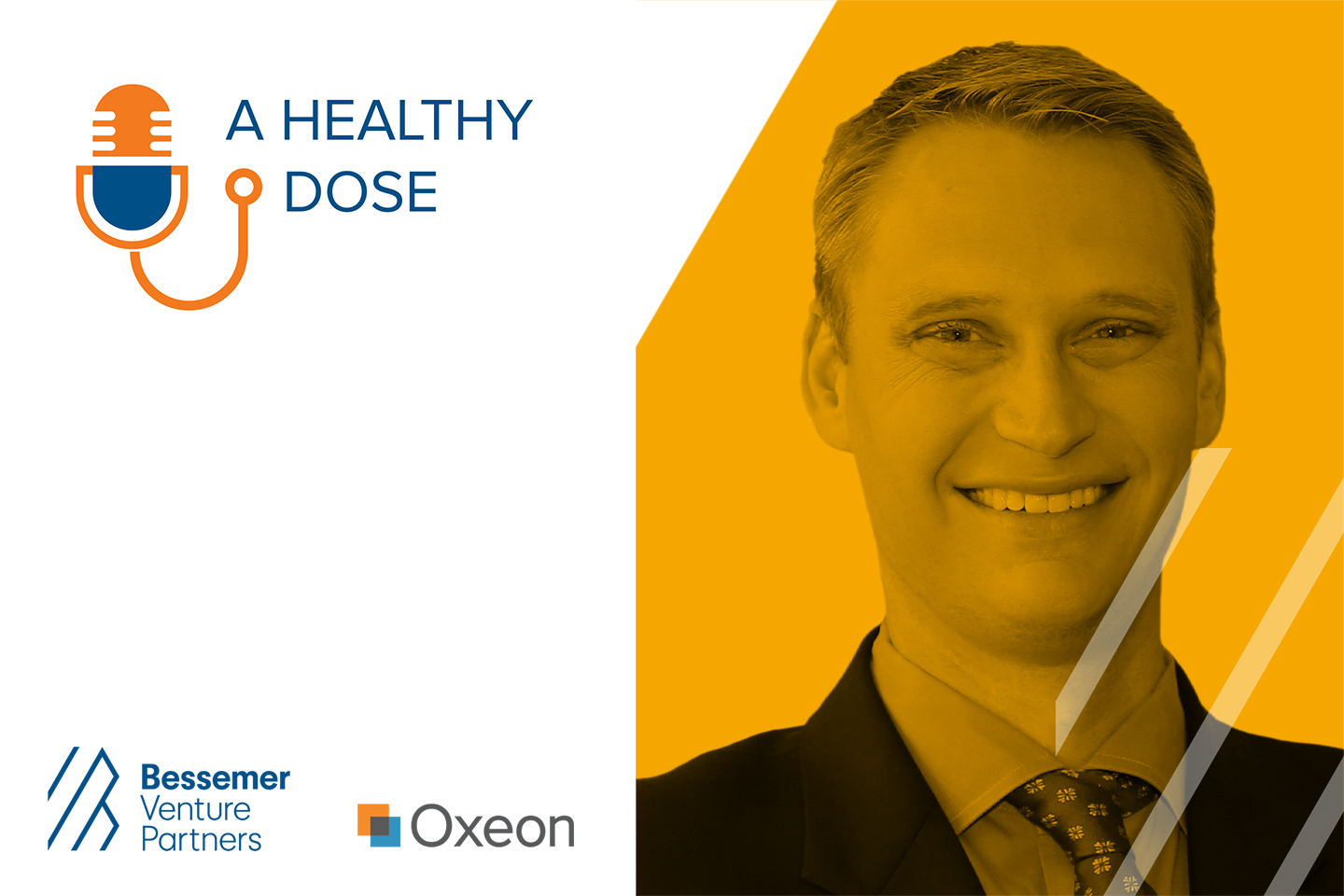
Mike Pykosz, CEO of Oak Street Health, sits down with Steve and Trevor and discusses his entrepreneurial journey of building Oak Street, how to compensate doctors in a value-based system, and the importance of investing heavily in preventive care.
Key takeaways include:
- The mission of Oak Street: “We operate primary care centers focused on older adults on Medicare, and we invest a lot more time, energy, and resources in improving health outcomes and keeping patients out of the hospital. It turns out the vast majority of expenses for Medicare is when acute episodes happen and chronic illnesses progress and patients have to go to the hospital. And so if you can invest more upfront, keep patients healthier, you can both improve outcomes and save a lot of money. We contract with payers to keep the savings. And so today we have 80 plus centers across 16 markets, a little more than 100,000 Medicare patients across Oak Street.”
- The value of running an “inefficient” healthcare system: “We run an incredibly inefficient primary care group. Our busy doctors see maybe 10 patients a day and that's purposeful, because the goal isn't to see a lot of patients. The goal is to keep patients healthy and really focus the time that patients need to understand their care plans, build that trust, and change the health trajectory.” Mike shares. “Look, doctors didn't go to med school, for the most part, to turn fee-for-service volume and drive off team referrals. They went to med school because they want to keep people healthy. We enable them to do that by giving them the time and the resources to make that happen, and we compensate them on that. Our compensation is base salary, plus a bonus. That's all based on quality-of-care metrics. Are you keeping patients out of the hospital? How are your quality scores, et cetera, et cetera? I think that that really aligns with what a lot of doctors are looking for, which is they want to do a great job. They're intrinsically motivated by their patients, keeping their patients healthy. I think they love the fact that we can reward them for that.”
- His entrepreneurial journey that inspired Oak Street: “I’ve always loved learning. I went to law school after college, because I didn't know what else to do with my life. And realized pretty quickly that I didn't want to be a lawyer. So I went into consulting, which was something I enjoyed because in consulting you're always learning about new businesses and learning about new industries. One thing I like about my job at Oak Street is that what I do is very different every year."
Andy Slavitt on the vaccine role out and joining the Biden Administration
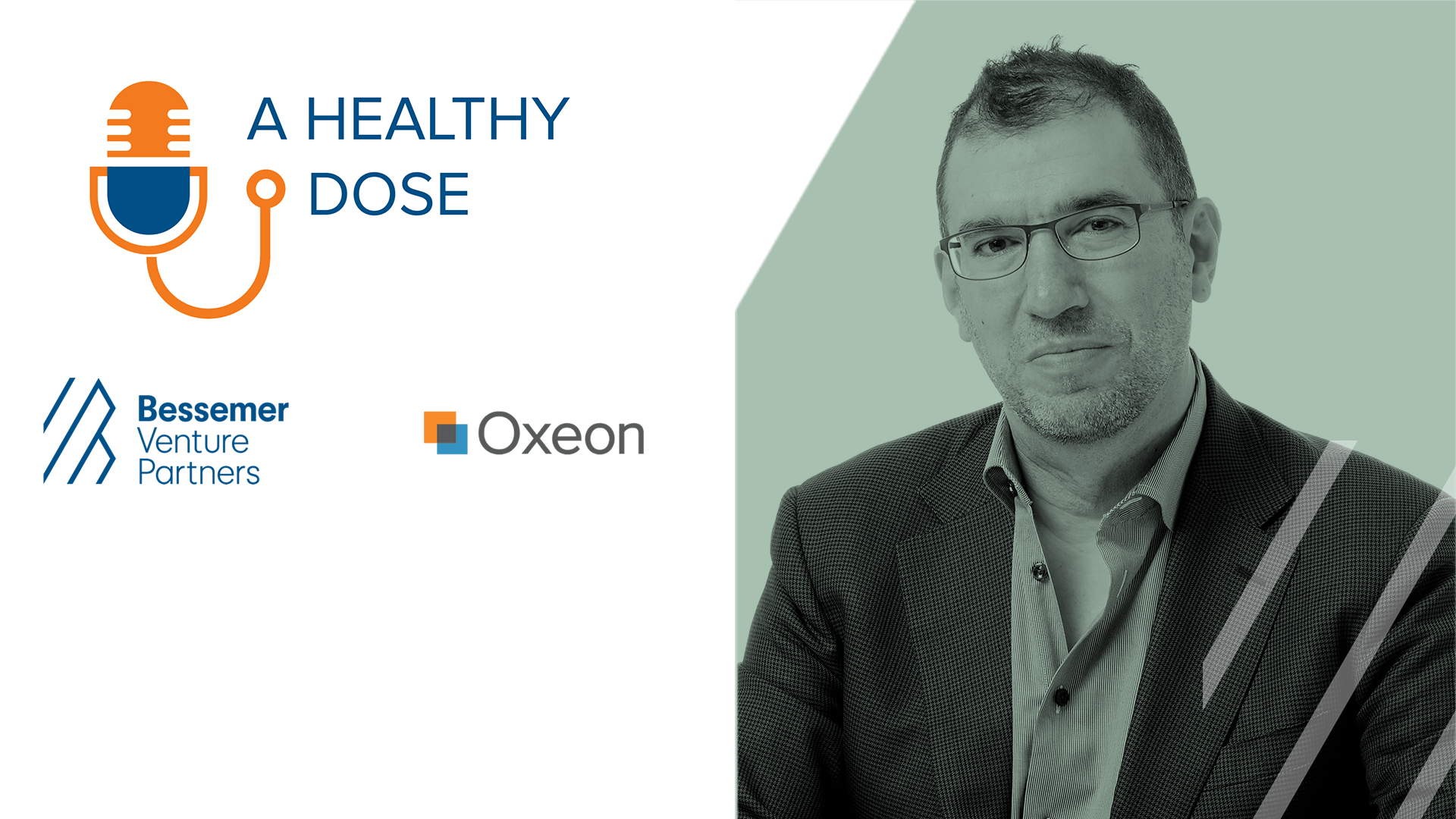
Andy Slavitt, former acting chief of Medicare and Medicaid, sits down with Steve and Trevor to talk about his new role in the Biden Administration, his perspective on the vaccine role out, and the power of communication in this public health crisis.
Key takeaways from this episode include:
- His point of view on the vaccine roll out: "We need a better, faster approach. We just need as many vaccines in as many arms as quickly as possible. And if that means we get a 35 year old vaccinated before a 42 year old, we have to live with that. If it were entirely up to me, which it is not going to be, I'd do vaccinations 24 by seven in every school, gym, and every football stadium, I'd have the army, Navy, and every drug store distributing vaccines."
- The power of communication in creating demand for the vaccine: "I believe we'll reach a point where we've got a glut of supply [of the vaccine]. And we're really trying to figure out how to stimulate demand. The whole pandemic to me has been the country playing chess, one move at a time. Today we've got a supply problem. But you know, there's a lot of people who haven't made up their minds on whether they're going to take the vaccine. How are we going to talk to people about getting their vaccines? How do we convince them that they need to take the vaccine? Communication is about listening to people's concerns and figuring out how to give them the straight story. Most people who aren't sure if they're going to take the vaccine aren't anti-vaxxers. It's that they have legitimate questions that they want answered. And they deserve to get straight answers to those questions."
- How he handles the fear of failure in this circumstance: "You have to have the mindset that 'I will fail until I succeed.' Every failure is just a setback. No one individual can fix the whole thing. But you have to get yourself in the mindset of, 'well, what can I do today?'"
Josh Harder, U.S. Representative for California’s 10th congressional district on focusing on common ground in government
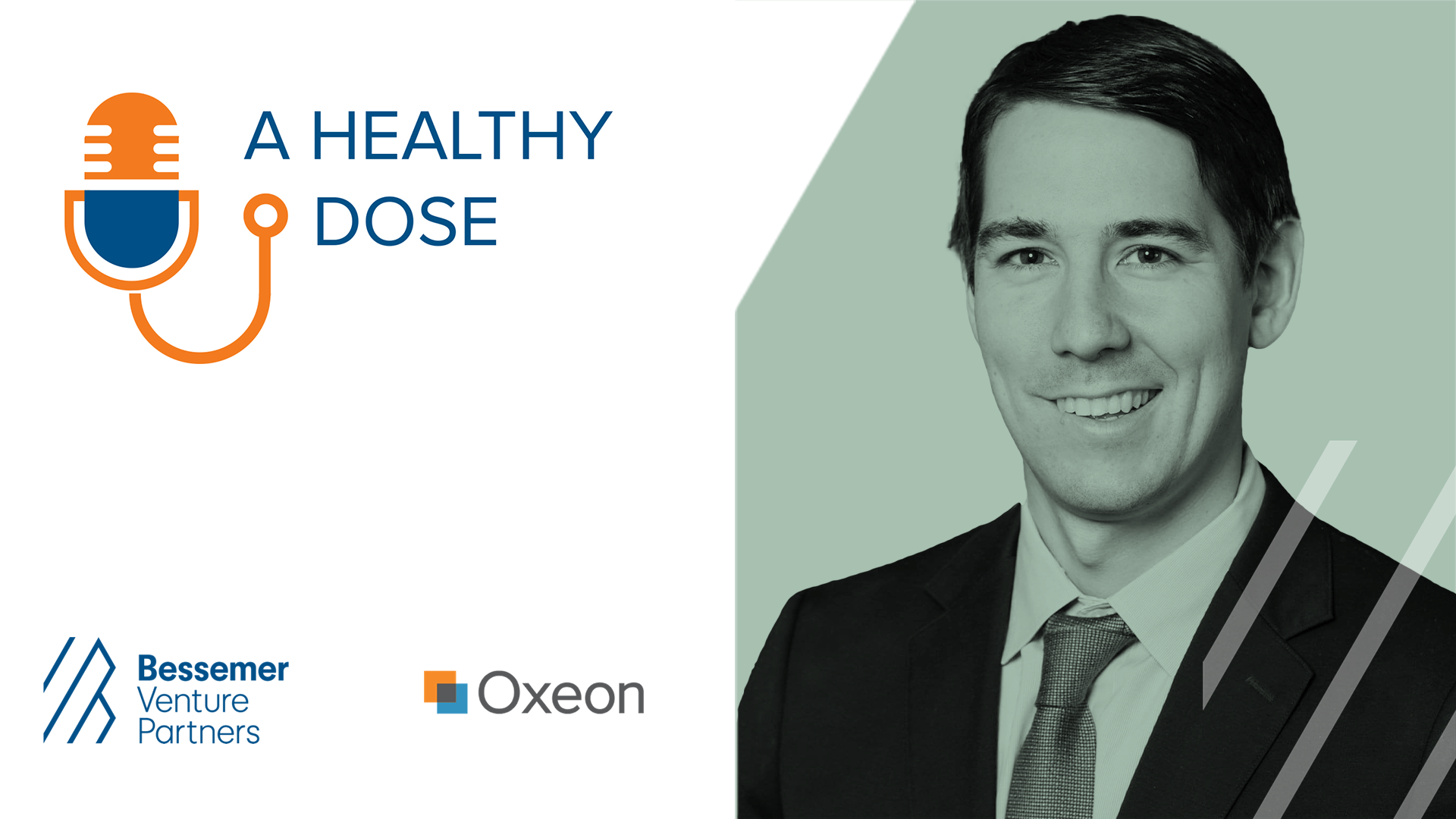
Josh Harder, U.S. Representative for California's 10th congressional district, sits down with Trevor and Steve on this episode of A Healthy Dose. They debrief about what we can learn from the November 2020 elections, how dealing with the federal government amplifies startups’ biggest challenge, and the importance of investing in our public health infrastructure.
Key takeaways from this episode include:
- Lessons from the November 2020 elections: “I think the lesson from November has got to be that we have to work on concrete actions that can help people,” Josh said. “And I think folks are exhausted at seeing their political leaders go on cable news or on Twitter every night and just scream at each other. They want actual progress on the problems that are most important to them. It's unlikely we're going to be getting home runs in this era, some big sweeping legislation, something like the Affordable Care Act that singles or doubles can do a lot of good. And I think that has to be our focus. And are there folks out there that are putting their own political jersey or their own selfish, political interests ahead of helping people? Absolutely. And we need to make sure that we're calling that out wherever we see it, and the only suggestion is going to be to get a compromised bill. I was a part of putting a bill like that together a month or two ago. We got 25 Republicans, 25 Democrats in a room, hammered out what a compromised stimulus could look like. And, we ended up getting a lot of hate from both sides, but I think it reignited some of the conversations that needed to happen.”
- How trust in a COVID-19 vaccine and public infrastructure can help America move forward: “Anytime that we're using public money, we should get a public good,” Josh said. “And we should make sure that we are ensuring that there is a safe, effective distribution of [COVID-19 vaccines]. Especially given some of the refrigeration requirements that are going to exist for these vaccines, and people want to work on that problem because they understand how important that is. This is a solution to getting us out of this massive crisis. And the reason why that is so important, it's not just for the dollars and the legislation that could happen at a Congress, it's because of the basic trust and the faith in this vaccine and the public health infrastructure that can get us out. What is the biggest difference that we have had in America versus countries that have really done this better? Countries that have done this better, had a lot more faith in the doctors and the scientists and the public health wisdom and the behavior from the public has changed. We need to make sure that we get a vaccine distribution. And the only way to do that, is involving Republicans and Democrats.”
- How startups’ biggest challenge is magnified when working with the federal government: “I think the biggest challenge that we have in government, especially working with startups, is what I would call the chasm of death,” Josh reflected. “Which is, we've made a lot of progress on doing innovative experiments and really cool proof of concepts at a small level. And you can see this with our defense budget I think in terms of cyber security and really interesting things that are going on there, it's so much easier today than it was 20 years ago to get a contract with the federal government to do some really cool things at a small scale. But, it is still all but impossible to go from that small scale and scale up. And part of it is that scaling up is always the biggest challenge for any new, innovative company. But that's magnified when you're at the scale of the federal government, when you're going from a little speedboat to a massive aircraft carrier that costs billions and billions of dollars. That is where I see a lot of people shifting away from government.”
- Prioritize the economy or a response to the virus? We all want the same result: “I actually think everybody pretty much wants the same thing, which is they want life to go back to normal as quickly as possible,” Josh noted. “They want to keep people safe and they want to make sure that we can get people back to work. And the economic consequences of what's happening are enormous. We will lose, current projections, suggest half of all independent restaurants across the country. Think about that. Think about spending your entire life, building a business. We have a lot of taco trucks in this region, and I'm a frequent consumer of taco trucks. Think about investing and saving for years to get your own truck, and then half of all independent businesses like that could go under over the next couple months if they haven't already. I think people really want similar things, but what we need to do to get there is to get this pandemic under control. We're not going to have life go back to normal until we make sure that we can take this pandemic and to do that, we need to make sure that we're investing in our public health infrastructure.”
- Solving the same set of problems in the private sector and in government: “My life has always centered on the same set of problems, but maybe different ways of solving those problems,” Josh said. “My parents met working at Poverty Health Clinic in the Dominican Republic. I've been very focused on how do we help people get jobs and really get affordable healthcare and all the rest. But frankly, in the earliest stages of my career, when I was working in the private sector, I thought the best way to deliver those services was through building great companies, which is what you do. It's what Trevor does. But what I think I've realized over time is that the biggest bottleneck we have to solving some of the biggest problems we have in this country, it's not a lack of entrepreneurs, we have plenty of those. Not a lack of teachers. It's not a lack of nurses or great doctors. We have a whole host of people that are willing to help. It's frankly, impeded the most by lack of political leaders with the courage and the ability to work together to get stuff done.”
Jeff Immelt, former CEO and chairman of GE, on the traits of successful leaders and advice for the incoming president
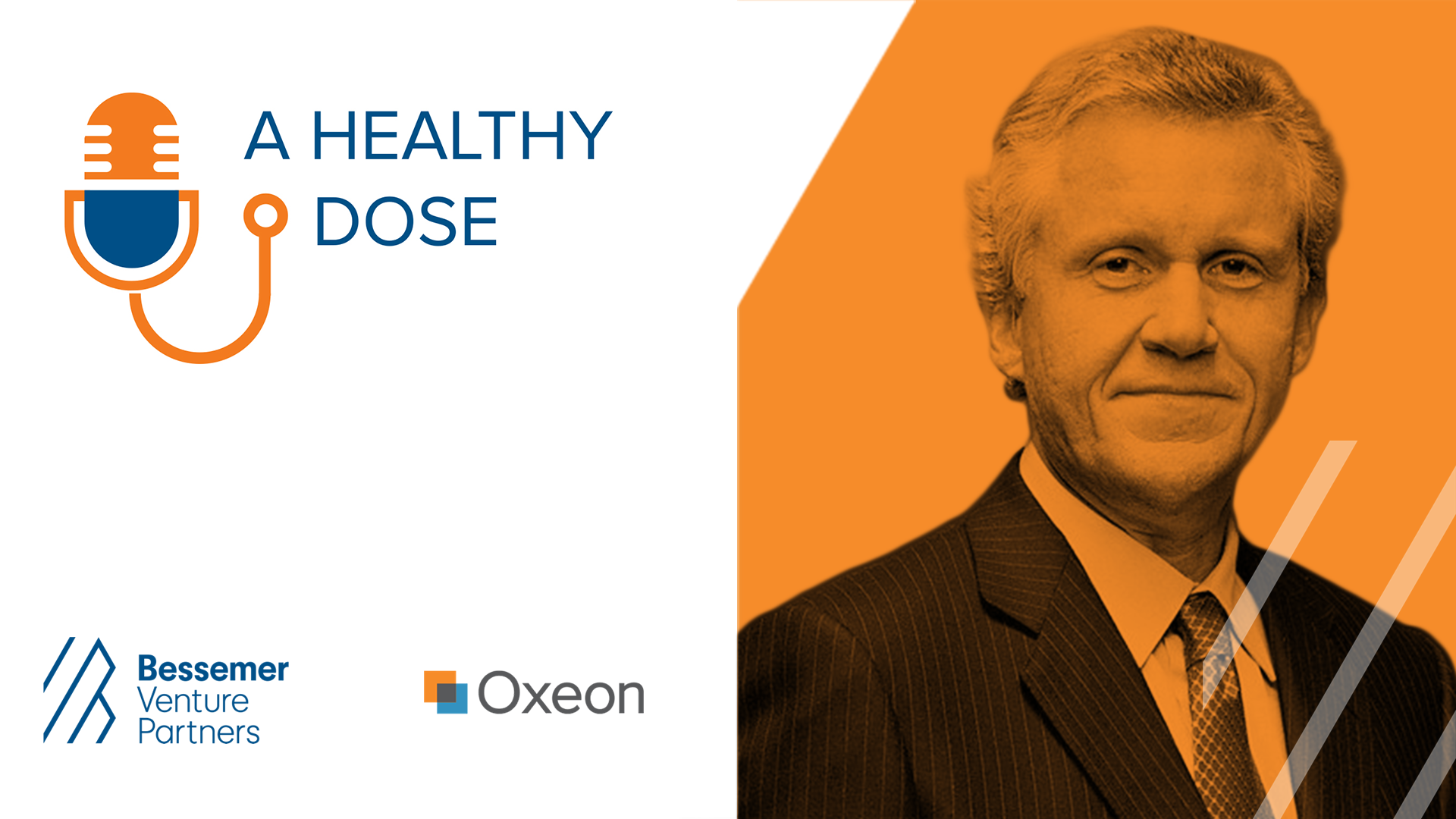
Jeff Immelt, former CEO and chairman of GE and venture partner at New Enterprise Associates, sits down with Trevor and Steve on this episode of A Healthy Dose. They debrief about the habits and characteristics of good leaders, the leading healthcare company of the future, and advice to the incoming U.S. president.
Key takeaways from this episode include:
- The traits that top leaders have in common: “As I watched successful leaders over my career, I began to see that people had certain things in common,” Jeff reflected. “They were good learners, they were competitive. They had the right combination of self-awareness and self-confidence. They had the courage to stand apart, right? And this mixture of human traits that I think make people good leaders, it's hard to tell how much of them are trained, how much of them were innate, how much of them are experiential. But I can stand back after 40 years and say, "Look, there's five or six things that, from Jeff Bezos to Steve Kraus and everywhere in between, these people have these things in common." And I think that's the key.”
- Why company loyalty matters: “I think some of it has to do with the industries you're in,” Jeff said. “I don't say one is better than the other. But if you work for Uber, right, and you're developing a ride sharing platform, nobody cares whether or not you've worked for Uber for a year or two years or five years. Nobody cares. The rider doesn't care. The driver doesn't care. Nobody cares. If you're building an engine that goes on an airplane that flies at 35,000 feet above the earth, people don't want to know that you changed jobs every six months, they just don't. I try not to be judgemental to say one way is better than the other. But I also remind my colleagues in Silicon Valley is that their way may not be the only way. That actually having loyalty, having the ability to stick with things does matter over time. And I would say, Steve, the best executives actually follow that as a path, whether it's Microsoft or Amazon or Salesforce.com. They have people now that have been there 20 or 25 years, that really are running the companies.”
- The importance of being a broad and deep business leader: “Good leaders in the business context are both broad and deep,” Jeff said. “And clearly when you come to a company like GE, a conglomerate, you have the chance to get broad. And I think that has unique opportunities that allow you to ask questions in a different way, to see around corners and things like that. The best leaders also though, a big industrial companies or conglomerates also know how to get deep. They get to know customers, they get to know technology. They're not bureaucrats.”
- The leading healthcare company of the future: “Hospital consolidations, they're just eating off each other's plate. Insurers become providers, providers become insurers. They're not really solving for anything,” Jeff said. “They're just splitting the profit pie differently. And I think that's one of the unnerving things about healthcare is that consolidations for the sake of consolidation, hasn't done anything for the consumer, hasn't done anything for the patient. But the merger of technology and risk just hasn't happened yet, right? And to me, that's worth investing in.”
- Advice to the incoming U.S. president: “I think whenever I had to turn around a business in my career, I always started by, let's do one thing well,” Jeff said. “Let's start by really working on COVID. Let's go to work together as a country. Let's not make it mask wearers versus non-mask wearers or who's opening versus who's closing. Let's get the therapies and vaccines, let's make it a national referendum on, let's do one thing well, right. And maybe I would add to that because they're related. Let's get all the divisiveness around healthcare behind us. Okay. Let's progress and get COVID and healthcare. And maybe we can have one or two wins and then begin to progress as a country, right. Get a little bit of momentum. And then it's easier to drive change when you're making friends than when you're making enemies. And right now we're just too good at the enemy collection game and that's not good for the country.”
Joe Grogan, former assistant to Pres. Donald Trump and former director of the U.S. Domestic Policy Council, on pandemic-related politics
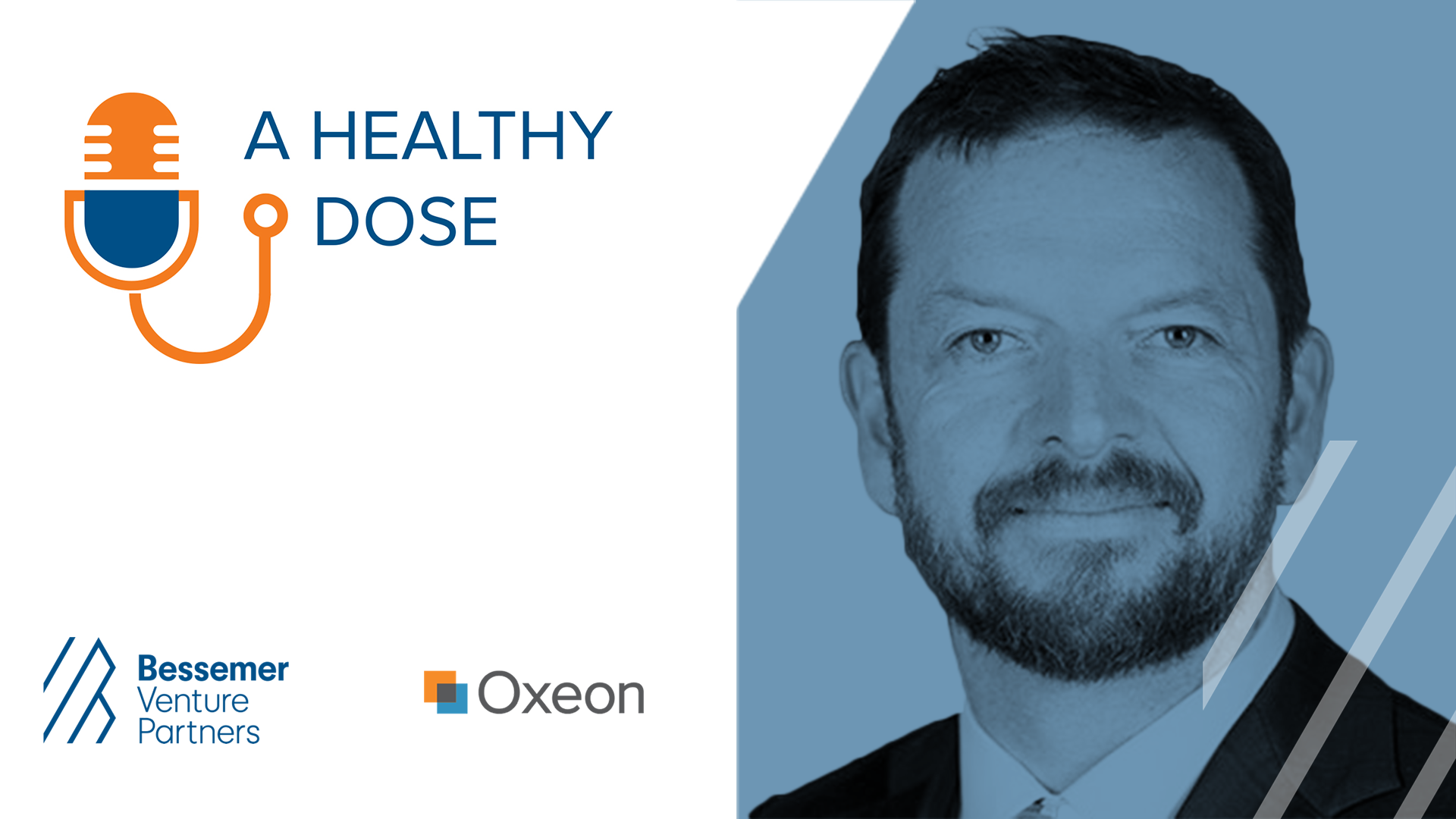
Joe Grogan, former assistant to Pres. Donald Trump and former director of the U.S. Domestic Policy Council, sits down with Trevor and Steve on this episode of A Healthy Dose. They discuss how the pharmaceutical industry should prioritize patients, the politicization of a COVID-19 vaccine, and ideas for what an alternative to the Affordable Care Act could look like.
Key takeaways from this episode include:
- The pandemic’s effect on the economy: “The pandemic caused a lot of economic destruction,” Joe said. “I mean, we weren't exactly cruising towards harmony five years ago as a country, and we've had contentious elections, and then we get whaled with a pandemic with the shutdown, which is incredibly stressful mentally, emotionally, to people and economically, and that doesn't bode well for harmony as a general rule for societies. It would be nice if our elected leaders could come together and figure out how to lead us through this. But when you have this level of economic disruption, which I don't necessarily see ending anytime soon, I do think it is difficult to pull people together. But it's going to take patience and it's going to take leadership.”
- Prioritizing patients in the pharmaceutical industry: “The industry hasn't helped themselves when they do create these patent thickets and all these things,” Joe said. “And I think they need to take a step back and fundamentally rethink the way they've engaged the American people with the story, to your point, and the way they engage policymakers to say, ‘Hey, listen, there is a social compact here.’ We make a lot of money. Many of our companies lose a ton, and they never make a profit before they go out of business. Many of them do make a profit, I was at Gilead, we didn't make a profit the first 25 years of existence. But the customer needs to come first. That's the patient, the taxpayer should come second, and then the manufacturer and all the commercial entities in the chain should be third in all these policy debates. And that's not the way it's been. It's been the commercial entities first, the patient second, frequently in the form of the patient group advocating, and then the third is the taxpayer.”
- Reflections on the Trump Administration’s response to the pandemic: “It's difficult for me to be objective, even with the distance I've got from The White House at this point, because I was there from the very beginning in January, when I started to get concerned based upon what I was seeing out of China and Europe,” Joe said. “I think a couple of things that people aren't really discussing that are going to need attention in the next few years, is why our institutions failed. I think, the administration has gotten a lot of criticism, some of it valid, some of it not valid, but you look at the amount of money that we devote to NIH, CDC, FDA, and frankly, if every political appointee in the administration had gone down in a plane crash, how would the bureaucracy in and of itself have responded from the beginning? Interestingly, CDC has the best flu teams in the world. There is no question about that.”
- Concerns about a COVID-19 vaccine: “I do worry about vaccines,” Joe said. “It's already started. I mean, it's already started, the politicization of it. You've had people say that they won't take a vaccine that the president's had anything to do with. You've got people saying that the vaccine development needs to be sped up, or that anybody who wants to adhere to a particular clinical standard is doing it for political purposes. It's extremely unfortunate, and even if it wasn't politicized the logistics of just getting Americans to take a vaccine like this is going to be very difficult to pull off. The double dose, say of Pfizer, where it's gotta be stored at 70 degrees below zero, and you have to distribute that across the country, that is going to be brutal to pull off. So, it will be politicized, and it's very fraught.”
- Possible alternatives to the Affordable Care Act: “Is there a non-ideological way to get there?” Joe asked. “And what I would focus on is the people with pre-existing conditions who can't be insured in the commercial market and figure out some way, with a federal backstop, to get all Americans, regardless of their socioeconomic status, some type of reinsurance or risk pool that the federal government backstops, and give some relief to the states and the employers on that side. Then I would focus on restoring the insurance market and its commercial offerings, and its ability to innovate at the state level. You could have some type of national catastrophic plan with just actuarial standards, so that, like me, back to when I was a ski bum, I could have bought a catastrophic plan to deal with the eventuality of breaking a leg or getting cancer at a young age, which relatively rare, but do that on a cheap basis.”
Sami Inkinen, CEO of Virta, on ‘burning the lifeboats’ to fully commit to your company
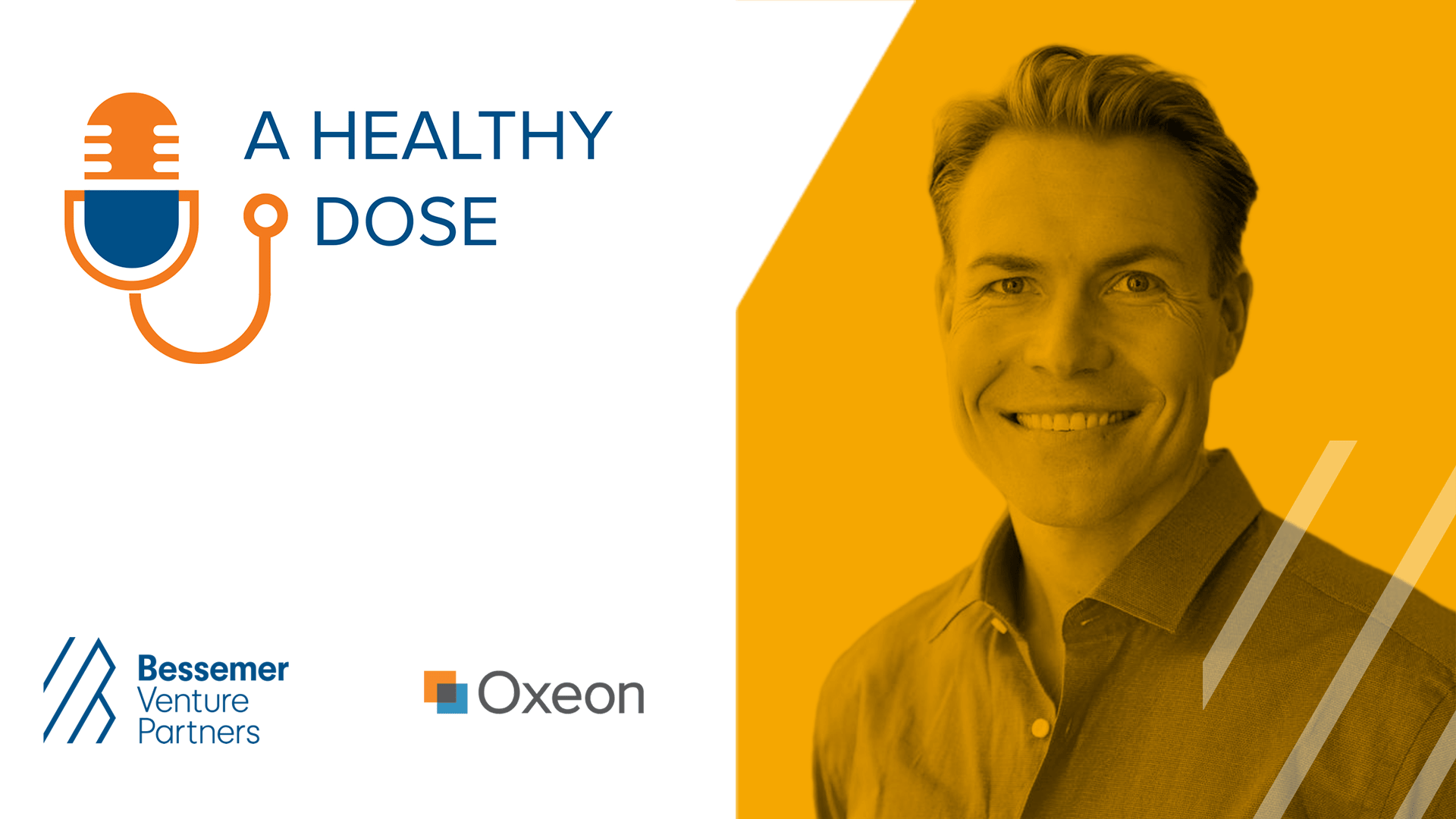
Sami Inkinen, CEO and founder of Virta Health, the first clinically-proven treatment to safely and sustainably reverse type 2 diabetes without medications or surgery, and co-founder of Trulia, sits down with Trevor and Steve on this episode of A Healthy Dose. They debrief about the value of pursuing an MBA for entrepreneurs, “burning the lifeboats” to fully commit to your company, and Sami’s journey rowing 2,750 miles with his wife from California to Hawaii.
Key takeaways from this episode include:
- The unexpected benefits of pursuing an MBA: “My motivational reasons to go to business school was not that I'm going to learn business. I thought, well, I will learn business by doing, or reading a couple of books, and done,” Sami said. “I can only speak from my very personal experience. To me, it was an absolutely life-transforming experience to go through Stanford for many reasons, least of which is that I found my co-founder for Trulia. It certainly allowed somebody fresh off the boat from Europe to establish yourself somehow. You get your connections. You have this stamp of approval that you got into Stanford, so you can't be a total hack. I'm a physicist by training, but I think there's a lot of bias toward this thinking that all you need is technical brilliance and you can build an amazing business,” he continues. “With my first company that was not the case. You can't put people into spreadsheets and think that you can solve an equation. I learned so much about leadership and building organizations at Stanford. So whether that's for everyone, I don't know. For me, it was an absolutely life-changing experience and I wouldn't trade it for anything.”
- Committing to co-founding Trulia and “burning your lifeboats”: “I got this $15,000 check [as a signing bonus to return to working at McKinsey]. At this same time, we were all in the process of starting Trulia, and going back to McKinsey was a tough debate emotionally for me. You come out of Stanford, you have a lot of debt and you have a good job, and you have all this temptation of working two years, three years, and pay back your debt. And then, I had a conversation with a professor at Stanford who said… ‘You are not 100% committed to your mission until you burn your lifeboats.’ After I thought about it, I called McKinsey, and I said, ‘I really appreciate this offer, but I'm not coming back.’ And they said, ‘Well, that's fine. Just send your $15,000 back,’ which pissed me off because I had used it. So I had to borrow money from a friend to send the check back. And then, we scribbled on a paper that I'm going to pay you, what was it, $500 every single month until I paid the $10,000.
- For healthcare entrepreneurs, make sure your investors understand the nuances of the industry: “Especially if you come with tech pedigree, it is possible, and potentially reasonably easy to raise capital, particularly early, from tech investors who do not understand healthcare at all,” Sami said. “Think through that very, very carefully because if your board members, and advisors, and early investors don't understand the nuances of healthcare, it could be a recipe for very bad marriage…. So think carefully about who is backing you, that they understand. Even if somebody else says, ‘I'm going to give you a little bit bigger check and a little bit better valuation.’ I was fortunate that I met with a lot of people like [Steve and Trevor].... but I either accidentally or by careful thinking, I ended up getting investors, and board members, and supporters who truly understand healthcare, and it was absolutely right.”
- On solving a problem alongside your competitors: “Thousands of people are dying because of diabetes every single day,” Sami said. “When we started Virta, the total cost of diabetes in America was $320 billion a year, according to the ADA (American Diabetes Association). Now it's $404 billion. So my question is, what the heck is wrong? A lot of people are making a lot of money out of diabetes. The problem is not getting smaller. So the answer to the question, is there space? If it's not Virta, I hope somebody else comes in and fixes the freaking problem. It drives me crazy. It's wonderful if people make money out of a disease, but somebody should fix the problem. What are the outcomes? That's why Virta exists, and that's why, like you said, we have a lot of work to be done to make the problem smaller, but that's why we exist. And I think there's always, as long as the problem exists, there's always room for companies that are actually solving the problem.”
Scott Gottlieb on combatting the vaping epidemic and supporting bipartisan public health policies
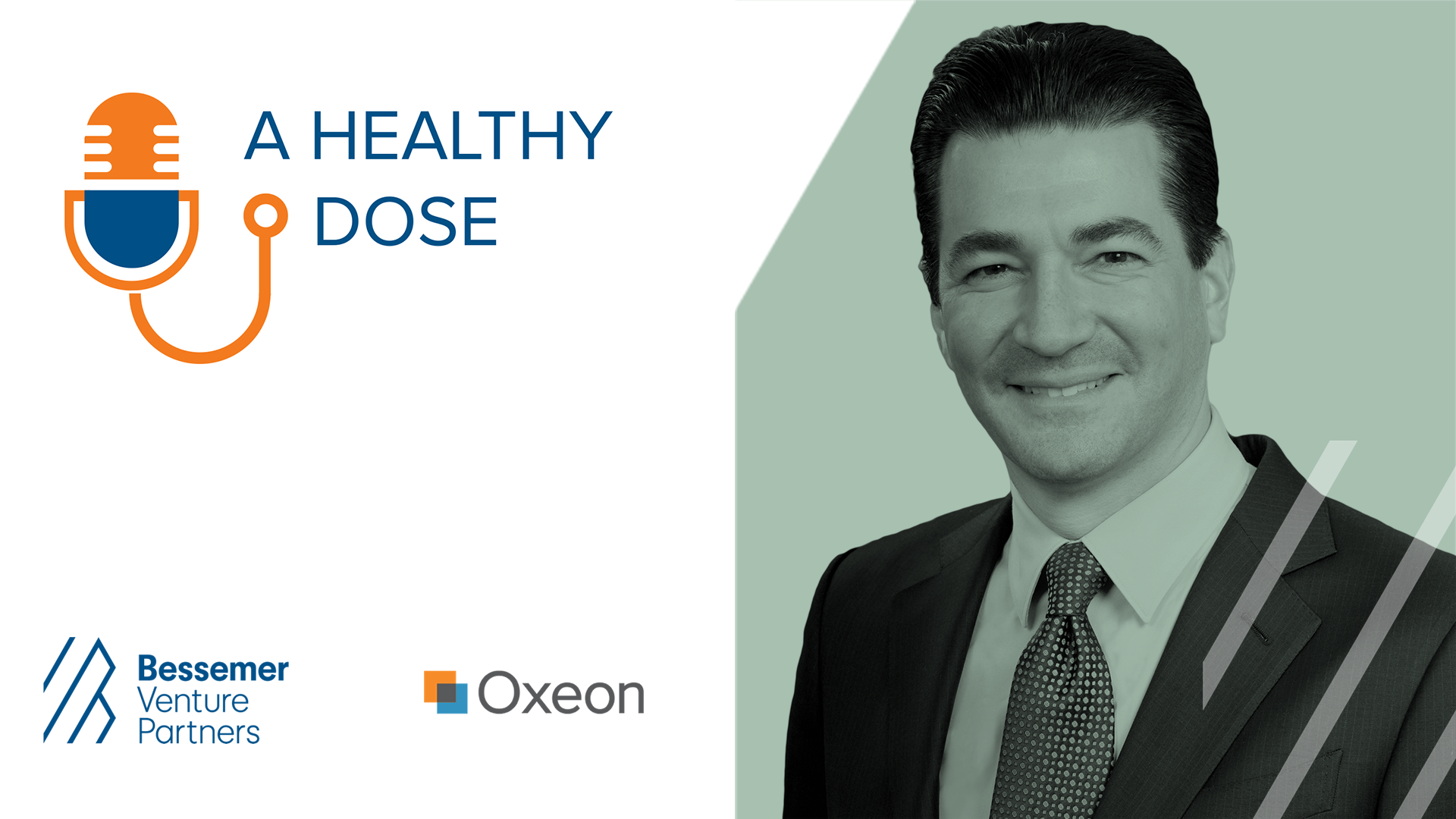
Scott Gottlieb, physician, investor and former FDA Commissioner, sits down with Trevor and Steve on this episode of A Healthy Dose. They debrief about the J.P. Morgan Healthcare Conference, healthcare trends, and how his life and work in healthcare has changed his time working for the federal government.
Key takeaways from this episode include:
- The scope of the Food and Drug Administration: “The FDA employs approximately 18,000 when you factor in contractors with a $6 billion budget. The structure of the FDA is broken into different centers—center for food safety and nutrition, center for radiological health medical devices, center for biologics, center for drugs, tobacco centers, center for veterinary medicine, etc,” explained Scott. “You're regulating about 25% of the US economy. Probably the biggest component on a dollar basis is the food center. If you think about what that regulates because you're regulating both farm production as well as packaged foods. Typically the rule of thumb is USDA regulates about 20% of the food supply. FDA regulates about 80% of the food supply. So USDA just regulates meat and poultry.”
- Why youth vaping is a public health crisis: “So [the FDA] saw e-cigarettes as a potential alternative for adults who still wanted to get legal access to nicotine, to enjoy satisfying levels of nicotine. This is not to say that the e-cigarettes are safe, they're not safe, they're causing damage to the lungs, but they're far less risky and dangerous than combusting tobacco and lighting tobacco on fire,” proposed Scott. “In 2017 it wasn't apparent that there was an e-cigarette vaping crisis among kids. It wasn't until early '18 that we started to get indications that something was happening. And what drove it really was Juul. I mean, what we didn't foresee and what wasn't apparent to us was how quickly Juul was rising in popularity among children. And if you look at the youth use crisis, the epidemic of youth use of e-cigarettes, it's really driven by Juul. Even now after Juul's taken action to try to get these products out of the hands of kids. In the most recent survey data, 60% of kids who are vaping are using the Juul product.”
- FDA’s policy response to e-cigarettes: “By 2018, we had set certain things in motion, and once the data came out, two weeks later I gave a speech saying that there is an epidemic of youth use of e-cigarettes,” said Scott. “I said that we were going to have to take aggressive action to regulate access to the flavored products. We had to reduce the access and appeal of these e-cigarettes to kids and the way we were going to do that was to try to restrict access to the flavored products, which is what the kids found most appealing. By November we unveiled what the policy which would restrict the sales of flavored e-cigarette products and convenience stores.”
- The bipartisan nature of the FDA: “Certainly with the FDA, there's a lot of camaraderie among people who've been in that job through successive generations. There is a lot of behind the scenes collaboration and relying on the advice and perspective of people who've been in these jobs before. And I think that's true also when it comes to Medicare, Medicaid, and other health care positions,” said Scott. “These issues certainly transcend politics but there are also shared goals that we all have from a public health standpoint, or from access to affordable healthcare; these things don't happen in the span of a single political cycle,” he continued. “When you come in for these jobs, you're inheriting things that people who are in those positions before you worked on. I think it's important to follow them through. For example, most of the key elements of Michelle Obama's nutrition agenda hadn't been implemented yet and industry was pounding on us to withdraw some of those regulations because of the costs we're going to impose. I made it very clear we were going to continue implementing those regulations as they had been defined in the Obama administration because they were important from a public health standpoint. They grew out of a strong bipartisan consensus, and you don't just disrupt the continuity around the implementation of public health programs because the politics have changed.”
Bob Kocher on healthcare policy and venture investing
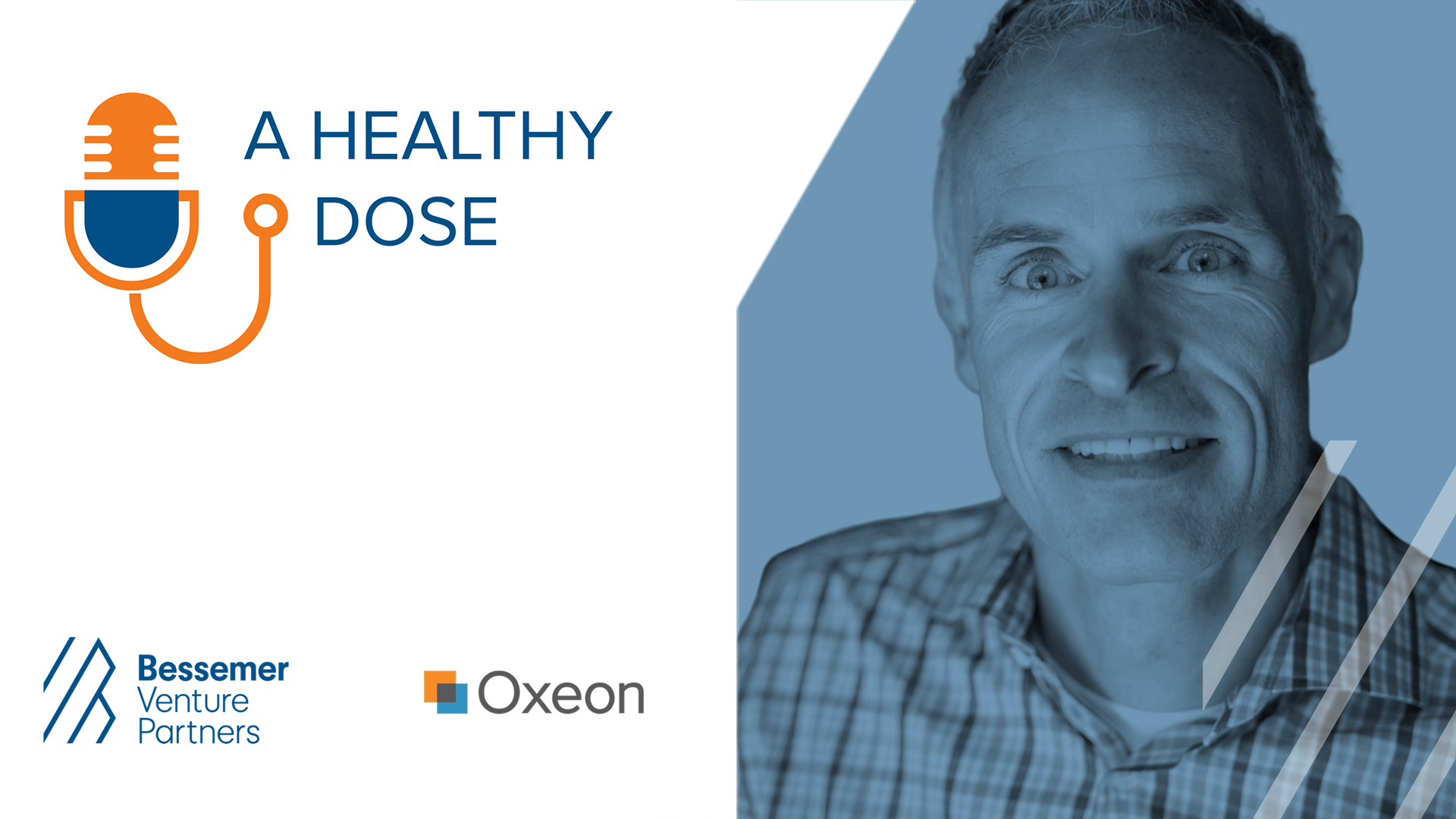
Trevor and Steve talk with Bob Kocher, physician, professor at Stanford University, author, and venture capitalist at Venrock. Together they talk about healthcare policy, along with healthcare IT and services investments.
Key takeaways from this episode include:
- What first inspired Bob to get into hospital administration and healthcare policy: "I spent the first four years of my McKinsey career working in 22 countries with hospitals on strategy and operations, and trying to make them better. What I discovered is that hospitals everywhere on the earth are very imperfect. They're all really a byproduct of the economic incentives in which they are working," said Bob. "None of them are productive and consistently delivering awesome quality every time, or amazing patient experiences. That got me very interested in economics, and McKinsey has a think tank called McKinsey Global Institute."
- The two main reasons why healthcare became so importanty during The Great Recession of 2008: “When we entered in January, there was 55 million Americans who did not have insurance because there was nothing for them. Medicaid programs generally didn't cover most people. Most states only had Medicaid up to like 75% of federal poverty,” explained Bob. “There's a giant pool of people who were uninsured. And employers were saying, ‘We can't pay for insurance for a long period of time for employees that are laid off. We worry that healthcare costs so much, that it will make hiring harder for us as we try to recover.’ States were saying, ‘We can't expand Medicaid because we have to balance our budgets. Our budgets are all broke because all of our sales tax and property taxes, because the housing market has collapsed, and business taxes had gone off a cliff.’ There was no way to provide access to healthcare for 55 million people. However, there was a belief that if we didn't attack healthcare and healthcare costs we wouldn't be able to fix state budgets, and we wouldn't be able to get people back to work because we had to have some way to subsidize healthcare coverage to allow people to start companies and move on. It was the Recession that made healthcare happen,” he continued. “Healthcare work only happens from a policy perspective when it has to and recessions are usually the things that trigger that work to happen. Healthcare redesign is always unpopular to some stakeholder group. The Great Recession is what enabled healthcare reform to happen. Obama was as much about education reform and social justice reforms and climate change, but it became clear during the transition that the first year we needed to do something to buffer the Recession and create some commerce.”
- Why Americans and the healthcare system needs to double down on flattening the curve: "If we get more and more comfortable, this virus will just spread faster, and the R naughts will reverse, and we'll give up all the gains. I'm very anxious that the lack of vigilance that we're seeing across the country right now, coupled with not great testing in a lot of parts of the country and no great treatments, will allow us to give up a lot of the gains that have been so painful," said Bob. "I worry too that as we have people go back to school and the flu season begin next year, that that combination is going to be really hard to manage. I don't think people have been prepared for that possibility. If we don't prepare for that possibility, the reality will be that we'll have to stay at home because our hospitals will be full."
- How COVID-19 is going to impact venture investments: "COVID accelerates all of the same themes that we've been thinking about for years, which is healthcare has to become more tech enabled, more virtual and home based, and more affordable. What COVID has done is it's forced everybody to become more virtual and tech enabled in their care, because you're fearful of getting sick if you go to the doctor. We have a system now where if you're a hospital or a medical group, your revenues have gone down a bunch. You're much more sensitive to what things cost," said Bob. "If you're an employer or a person in the digital market, you're very concern about cost too. I think it sort of has ironically helped create the momentum for a lot of the work that we've been doing for years, and a bunch of our companies have actually in this period done better than they would have expected because they're offering virtual type care. The other thing it's pushed forward is risk based models. If you're a person managing risk, you've never done better because so many elective procedures have gone away that you're crushing it, at least via benchmark. If you're paid on a per member per month basis, your revenue didn't go down when volumes went down. It's made risk based businesses that much more attractive as well," he continued. "I think what's a silver lining if there is, there's not many, is that Medicare now is covering telemedicine services for the first time in the Part D program for fee for service Medicare patients. They're doing it at par for what you pay for an in-person visit, which has created now the largest tam ever for telemedicine, and a bunch of opportunities to be innovative. I don't think they're going to go back. I think people have now tried telemedicine, they like telemedicine. Providers learn how to do it. There's a bunch of use cases that we can now invent, that take advantage of the fact that both young and old people are using telemedicine services to make healthcare way more accessible and way more affordable, and higher quality.”
Donny Tuchman, CEO of Cobble Hill LifeCare on caring for elder populations in pandemic hotspots
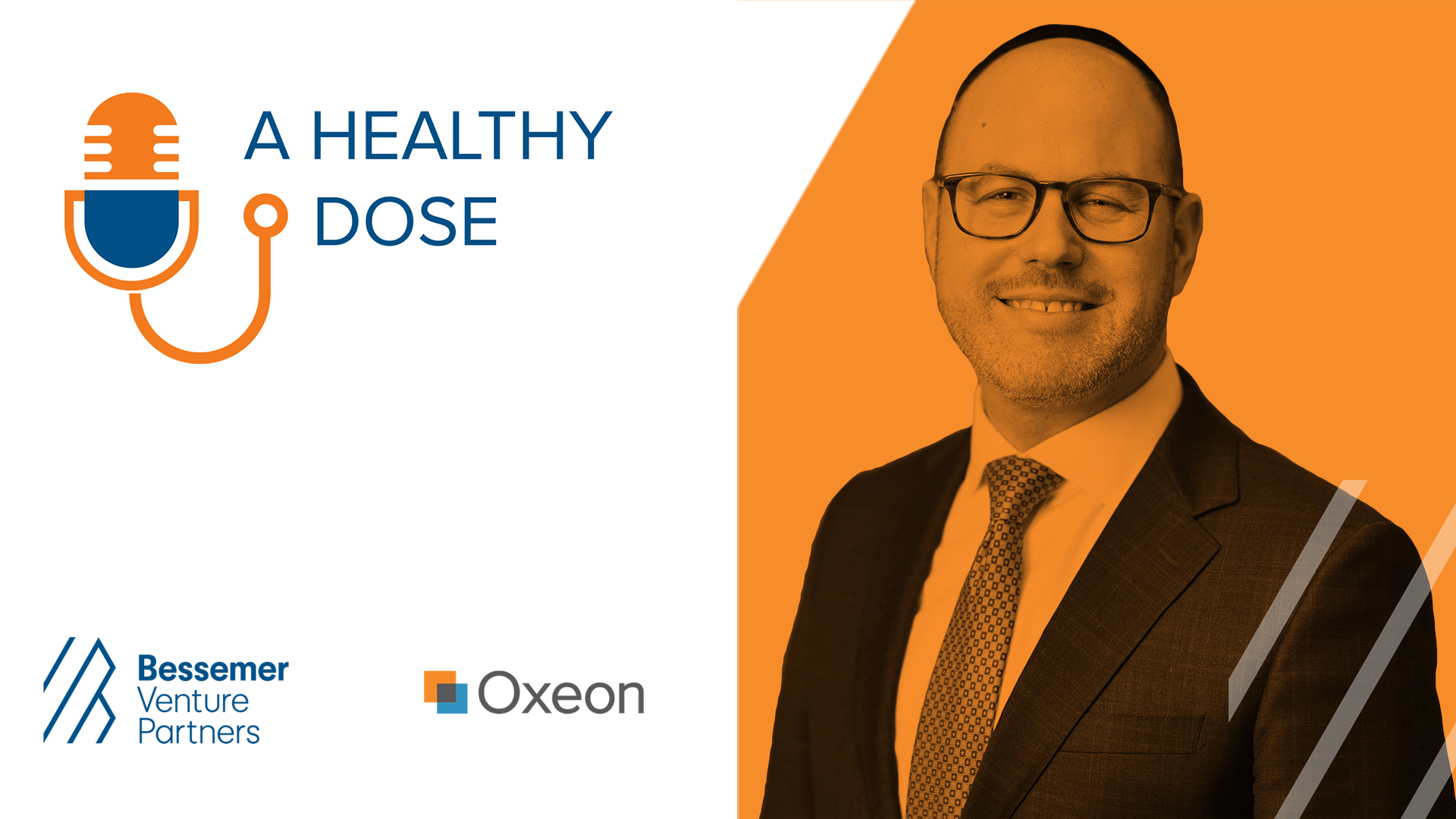
In the tenth episode of A Healthy Dose COVID Crisis miniseries, Trevor and Steve talk with Donny Tuchman, CEO of Cobble Hill LifeCare. Donny talks about how Cobble Hill's frontline workers are managing care for its nursing home residents in Brooklyn, a hotspot of the pandemic.
Key takeaways from this episode include:
- Fresh perspectives on what care optimization means at a skilled nursing home facility: “Optimization is about meeting the needs of the resident where they are and trying to help them along with their families. Imagine, what is the optimal quality of life that this resident, this person, can achieve wherever they are? If it's a short term rehab patient, it’s—’How can we as quickly as possible get you back on your feet and get you back home? And how can we help you transition back home without bouncing back to the hospital?’ To a long term resident who has their own unique situation and needs, to the palliative care resident, it's about, ‘How can we help you live out your days? How can we help you have a peaceful, comfortable end?’"
- The challenges of COVID-19 preparedness for the elder population: “In the second week of April, I know we had 50 concerning cases already, where we suspected. Fairly early on, the Department of Health actually came out with guidance saying that we actually shouldn't be testing, and we don't need to test. If we reside in a community where there's widespread community transmission, to just assume that based on symptoms only, the residents have it. And then to just put these practices in place, infection control, do the best we can under the circumstances. So it was pretty quick...we calculated at one point that we probably would need around six to 8,000 gowns, for example, a day, a day, to just manage our population. (When we're full, we're at 364 beds and we typically run 90, 98% occupied.) During this process we made a deliberate decision to bring our census down, particularly because the staffing was just, it was really, really dire. At the height of this, we lost a third of our staff that were out sick.”
- Managing grief and the emotional toll COVID-19 has had on nursing staff: “So when our residents are dying for whatever reasons, and especially when they're dying in large numbers and in a very concentrated period of time, that's very, very traumatic for the staff. So we were grieving with them....We have all fought valiantly to protect our residents, to be transparent with our family members and to do the utmost that we could to honor and respect them. But as a leader, my objective was equally to my team, to support them as well as to our residents and to their families.”
- The future of skilled nursing facilities: "When I assumed CRO, a couple of years ago here, it was really about parallel paths. One: How could we create a highly effective skilled nursing facility to optimize care? Two: How do we recruit a team of people who were innovators and entrepreneurs to be able to imagine and to envision what are the needs going to be in 20 years from now? How do we think about how to bring the services to our residents? What kind of services will they need? How do we leverage technology? We are a traditionally resource poor industry. Everything comes to us last and you know, my personal belief is that if it's typically built for the skilled nursing facility, it's probably pretty mediocre. So we have to start to think much more broadly, much bigger, develop moonshot ideas of how do we really innovate and optimize? And stop thinking in this really small minded way about what's here, right in front of this right now, and just putting out fires and responding to the crisis of today.”
David Shulkin, M.D. on serving veterans and the role of government in a public health crisis
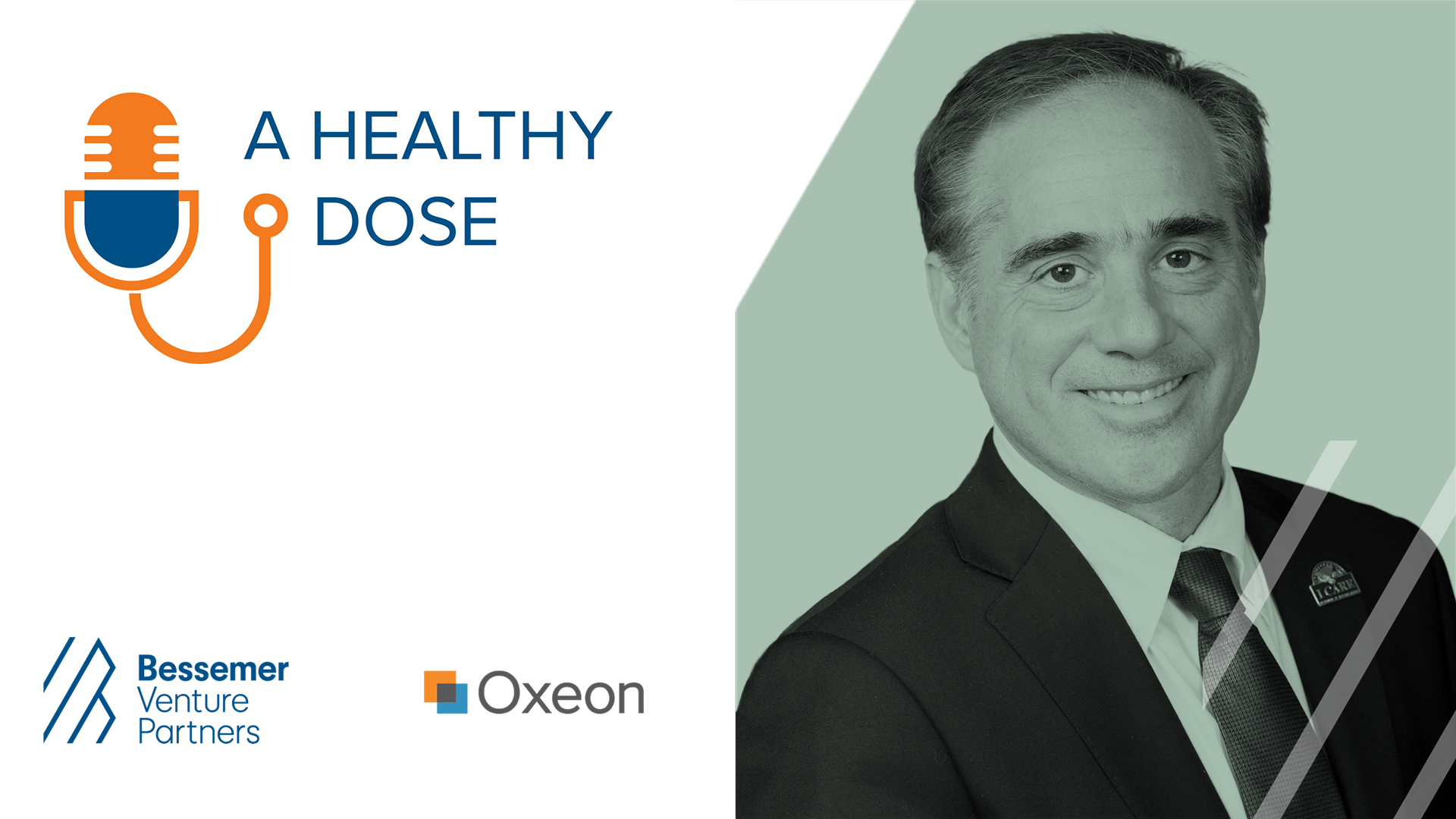
In the ninth episode of the A Healthy Dose COVID Crisis miniseries, Trevor and Steve talk with David Shulkin, the ninth Secretary of the U.S. Department of Veterans Affairs who served under President Donald Trump. He was the Under Secretary of Veterans Affairs for Health from 2015 until 2017, appointed by President Barack Obama. Before his work in government, David also led as Chief Medical Officer at UPenn and ran a value-based organization at Atlantic Health Care.
Key takeaways include:
- How value-based care vs. fee-for-service systems compare during COVID-19: “This crisis has really amplified and exposed all the different dysfunctions of a healthcare system and has exacerbated those that were more fragmented and allowed those that were more integrated and consolidated to function even better because this requires people to communicate,” prefaces David. “It requires people to share data, share resources, think together, and so some of those organizations, those value-based organizations that you've talked about, are just further along in terms of being an integrated model; that means that their communication and their ability to work together and break down the silos is already more advanced than some of those that were in the more traditional model. However, it's really not a reimbursement or a business model issue here. It's really more the extent that the organization works together and people work together.”
- Whether the COVID-19 outbreak in the U.S. is a failure of our public health system or a failure of communication at the federal level: “I believe people in public health and in academics are going to be asking for the next decade as they look back upon this crisis. For me, this really highlights what the role of government is. And over the past couple years we have gotten so used to government being about partisanship and political games and people got so turned off to it, and now we recognize the real role of government is to protect the safety of its citizens,” said David. “Now that we are in a pandemic and a public health crisis, we recognize that this is the role of government—to be looking out for surveillance, to be looking at how we respond when there is a public health issue, to be coordinating these resources, to be providing things for citizens that local governments can't do. Frankly this has exposed us to the fact that we’ll have to reinvent the way that the governments at the federal state and local levels work with the private sector in order to be able to fulfill the real role and function of what the government should be doing.”
- The massive scale of The Department of Veteran Affairs: “The VA is the largest healthcare system in the country and it's the second largest government agency. So first you have the Department of Defense and then you have the Department of Veteran Affairs,” explained David. “The Department of Veteran Affairs has over 400,000 people in it. To give you a comparison, the Department of State has 20,000 people in it. And so the budget of VA is now around $220 billion, although they just got another $19 billion in the first Cares Act. So it continues to have extensive resources. It has more doctors, nurses, pharmacists, psychologists, social workers employed than any other health system, and about 1100 facilities across the country and serves veterans across the world wherever they live.”
- Why veterans are an at-risk population for COVID-19: “There's about 20 million American veterans, about half of them, just under 10 million, get their care at the Department of Veteran Affairs healthcare that is,” said David. “The Veteran Affairs Department serves largely as a safety net population—those people that were injured during their service or meet certain economic levels where they are unable to afford healthcare in other environments. So it's a place that many people rely upon to get their healthcare. Many veterans live in rural parts of the country where healthcare resources are scarce and you can't find specialists and certain healthcare professionals. The average age of our Vietnam veterans, our largest group of veterans, is now above 70 years old, so those that do need care tend to be older and sicker, with about 60% having a comorbid diagnosis in a behavioral health category.”
- The importance of telehealth for veterans during the pandemic: “The number one issue that I established as the top clinical priority when I was Secretary and remains the priority at VA today is suicide prevention. Twenty veterans take their life every day,” said David. “That is a much higher proportion than you would find in the general population, and so when you isolate people and you add stress and the economic impact of this pandemic on people, there is certainly going to be very severe consequences here,” he continued. “So you have to battle that in ways that I think are effective. The most effective way to do that, particularly in the veteran population, is peer support and people reaching out who understand what the veteran experience has been. That's something that VA has learned and does well, and telemental health and organizations are critical for veterans at this time.”
Gina Raimondo, Governor of Rhode Island, on managing public health and economic security during COVID-19
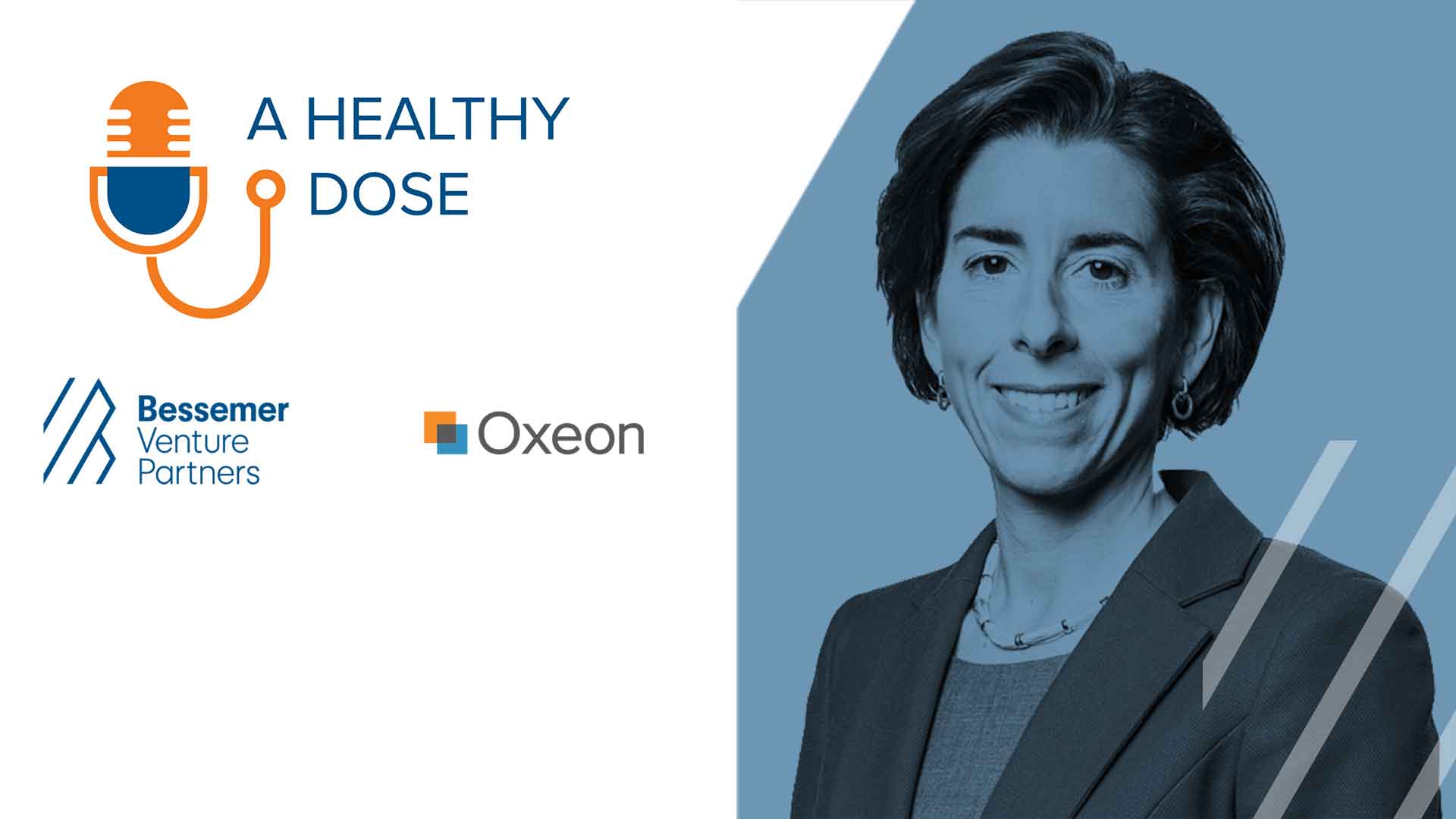
In the eighth episode of the A Healthy Dose COVID Crisis miniseries, Trevor and Steve talk with Governor Gina Raimondo, the Governor of Rhode Island. “This coronavirus has massively and significantly accelerated many of the trends that were happening in our economy. Public sector leaders have a serious obligation, as do private sector leaders, to help support the businesses and people most impacted,” Governor Raimondo said. “Corona has devastated people and businesses and I believe we have an obligation to train them up and give them a chance to compete.”
Key takeaways from this conversation include:
- The role of the federal government during this global pandemic: “When you're fighting a global pandemic, a global public health crisis, it's appropriate for the federal government to lead. Every state should be led by them, and then of course every governor has to respond to the conditions on the ground,” she explained. “The whole reason we're in this mess is because at a federal level, we have disinvested in public health infrastructure for a long time. And so when the crap hits the fan as it is now with this virus, the national stockpile was not even close to what it needed to be. We all opened the cupboard for the national stockpile and there wasn't enough there,” Governor Raimondo continued. “This craziness of telling states to each go into the private market to buy what we need, and oh, by the way, compete with the federal government, that is not how it's supposed to work. If we had a robust public health infrastructure federally, which is what we should have, we would be in a whole much better place. By the way, within that, every governor still could do what they needed to do. We could invest more in certain places; for example, my state looks different than every other state. It's very densely populated. We have a high immigrant population, obviously I have to do different things than Idaho, Wyoming and Montana. But the fact of the matter is the federal government just isn't doing, didn't do, wasn't ready to do what it should have done.”
- The vital importance of building a public health infrastructure at the state level: “I'm very proud of the fact that in Rhode Island, we have a 3% uninsured rate. Ninety-six percent or more of Rhode Islanders have health coverage and that's a great thing. Going into a pandemic of this kind, the last thing people need to stress out about is, can I go see my doctor, can I get a test, can I go to the ER, can I go to the hospital? And so while our system is far from perfect, it's pretty good. It's better. We have almost no children who are uninsured and that's a good thing. Also though, I have moved quickly to build many public-private partnerships,” said the Governor. “Like any CEO, you've got to get the job done. I had to get the job done. So if the federal government wasn't going to deliver tests, I had to reach out to other areas. So for example, we reached out to CVS, which is headquartered in Rhode Island, and they saved the day. We worked with them, they partnered with us, and with Abbott. I brought the national guard to provide manpower, and we tested over a thousand people a day at the one CVS drive through testing site.”
- The delicate balance of managing economic insecurity and public health risks: “There's no question that there's a relationship between economic health and physical health. Being out of work for a long time is going to make people less healthy, mentally, and physically. That really weighs on me,” said Governor Raimondo. “You know Steve, I have spent six years blindly focused on getting Rhode Island's economy back. When I was elected governor, Rhode Island had the highest unemployment rate in the country. And I got elected and widely reelected because I talked all about creating jobs, and before this happened, our economy was rocking and rolling, so it killed me to shut down businesses. I want to be pretty aggressive, on the safe side of aggressive, around bringing back businesses. So for example, I never shut down manufacturing. That was a difference between Massachusetts and me. So far, that's turned out to be a good decision.”
Kevin Tabb on the innovative and collaborative response to COVID-19 in Boston
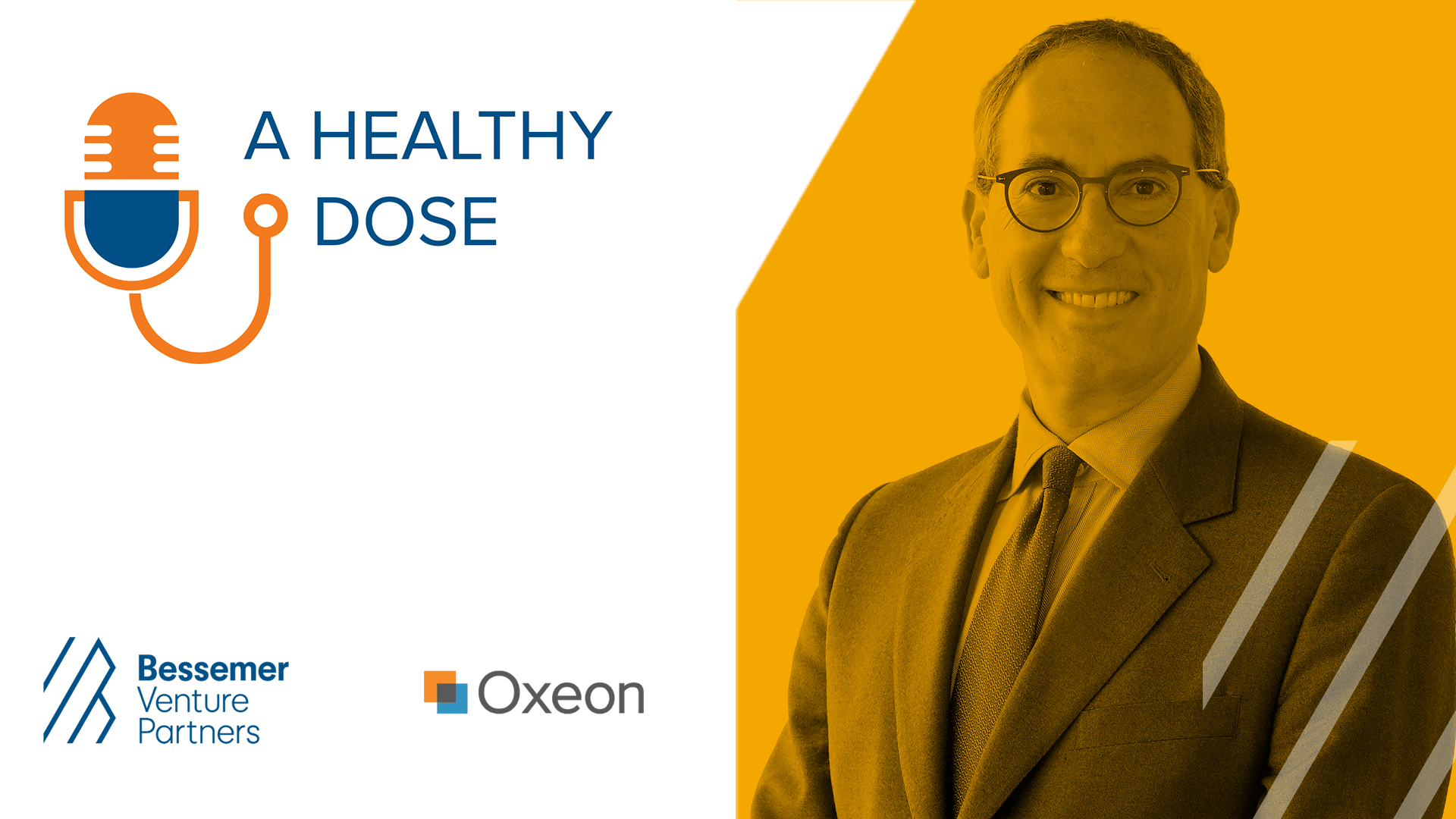
In the seventh episode of the A Healthy Dose COVID Crisis miniseries, Trevor and Steve speak with Kevin Tabb, President and CEO at Beth Israel Lahey Health, and is one of the most prominent and respected health system leaders in our country. In this conversation, they discuss the challenges of running a hospital in these harrowing times.
In this conversation, they discuss:
- How COVID-19 is disportionally impacting communities of color: “In terms of payer-mix at Beth Israel Lahey Health in Boston, we're roughly 50% commercial and 50% governmental, made up of mainly Medicare, but also a significant portion of Medicaid. But what we're seeing that is really very, very disturbing is that more than 40% of the COVID-positive patients in our ICUs that are intubated come from a very small number of neighborhoods, towns and 30 to 40% of the patients are from Latinx and black communities,” said Kevin. “That is very, very different than what we historically see. Often they would make up somewhere between 15 and 17% of our historical discharges. If you walk into our ICUs, you are struck by how much this has hit, disproportionately, a number of communities of color.”
- Why the United State’s response has lagged compared to other countries: “There are some countries that were able to mobilize really quickly in ways that were very effective. Singapore certainly comes to mind, but you don't see the scale that you see in this country or in China or in Europe. The challenges here have to do with that this is unprecedented, first of all, there's nobody that believed or imagined that it would get as bad as it is,” said Kevin. “I think many people knew and believed that a pandemic was coming. There's no question. But I think there was not a prediction that this one would end being as devastating as it was, combined with global supply chain issues. So we're dependent on a global supply chain that has shut down in a global pandemic, and it's really a wreaked havoc. We'll probably change the way that we think about how we procure and how we rely on ourselves on stuff produced in this country. I think that there's a lot of soul searching going on at the moment.”
- How hospitals are collaborating in the Boston area: “There's fierce competition in the Massachusetts and certainly greater Boston market in healthcare between a number of systems. That has been wiped away. We virtually meet and talk, the leaders of the healthcare systems of Massachusetts, multiple times every day. We coordinate where to send patients, we move equipment around, we talk about what needs to be done multiple times a day. It's almost as if we have a single healthcare system at the moment in Massachusetts, which is again unprecedented. There's never been anything like it. That is really a bright point, I would say, and really gratifying to see,” Kevin said.
- Why we must temper our hope for a vaccine with patience and caution: “There is a lot of great work going on at our institution and around the country. We have somebody named Dr. Dan Baruch who's working with J&J on a potential vaccine, which is very promising, although there are lots of good groups around the country working on things. We're participating in many of the multi-center trials for a variety of different potential drugs,” he said. “I want to inject a note of caution, though. I think that there is a real obvious desire by everybody to find something quickly, but we need to be careful to study these things appropriately and not jump to conclusions. Unfortunately, there have been some examples, such as hydroxychloroquine. But we don't know yet, and anecdotes are not only unhelpful, but also they can be harmful. We have to conduct these trials and do them well to see what helps and what doesn't, and we just don't know the answer yet. The fact that we all want an answer so quickly is understandable but that may lead us to the wrong conclusion. It’s highly unlikely that we are going to have a vaccine if we move at light speed in anything less than 12 to 18 months.”
Stephen Rosenthal on managing patient population health in a COVID-19 hotspot
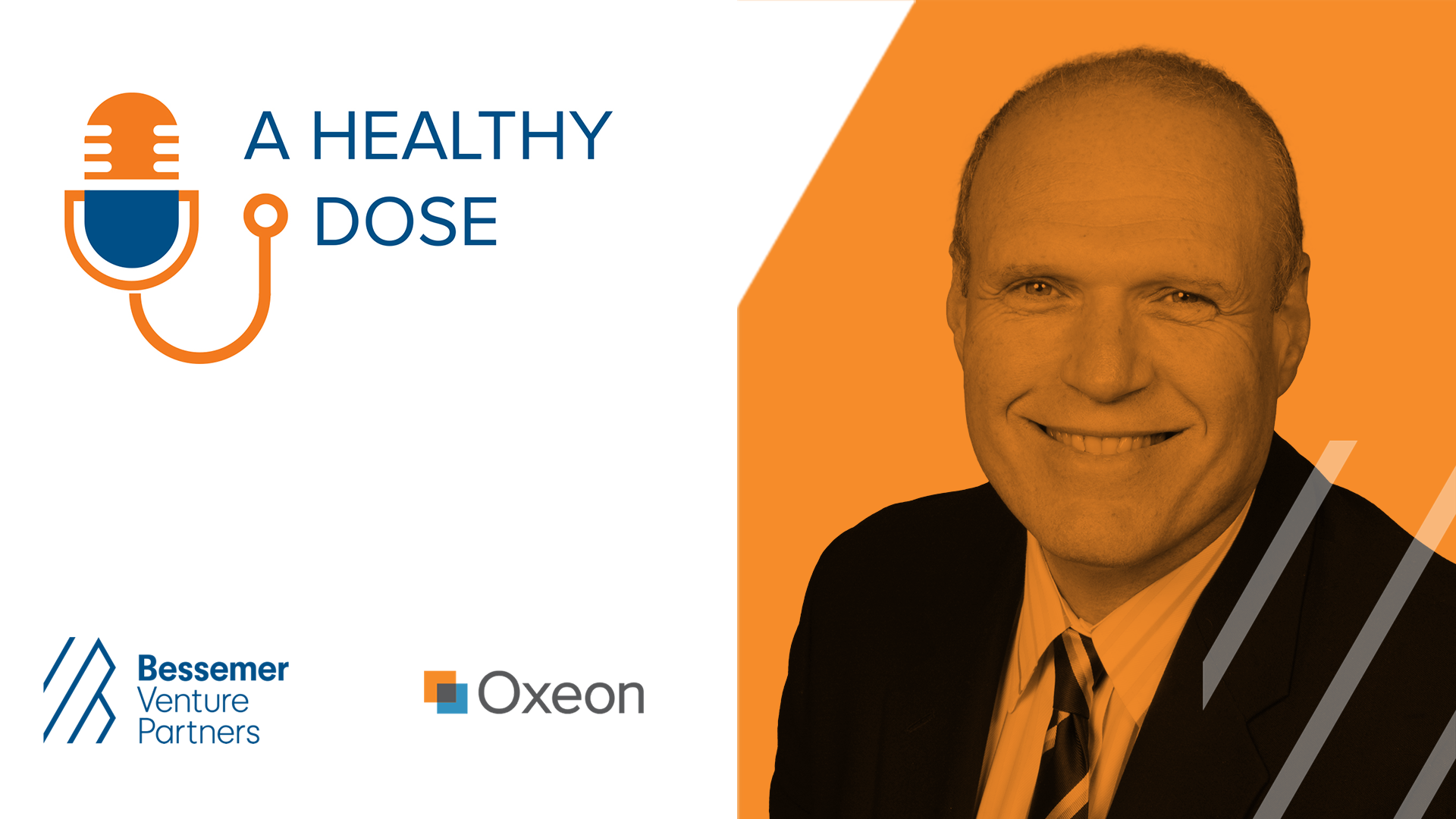
In the sixth episode of the A Healthy Dose COVID Crisis miniseries, Trevor and Steve talk with Stephen Rosenthal, Senior Vice President of Population Health Management at Montefiore Health System.
Takeaways include:
- The origin story behind Montefiore’s Health System: “Montefiore has been around for quite a long time. It actually moved from Manhattan at the turn of the century up to the Bronx because back then the Bronx was basically just farmland and they were able to build a new facility there largely for managing patients with tuberculosis. So, Montefiore began with managing a pandemic of sorts. Actually one of our first buildings was the Florence Nightingale design because it was built as a T so that depending upon how the wind blew, the hospital would be able to create ventilation before there was air conditioning by opening the doors at either end of the corridors to create air flow in the buildings.”
- Insights into Montefiore’s patient population in the Bronx: “Of the 1.4 million residents of the Bronx, roughly 800,000 are Medicaid. So that's a substantial portion of the market of course, and that's probably the largest segment of our business model. Then there's a fairly significant Medicare population and they probably approach about 180,000 lives in the Bronx. But the interesting thing about that is that more than half of them are dually eligible. So you have a very poor and fragile population that depends on Medicare and Medicaid. The Bronx has a special need and clearly under this COVID experience the Bronx has suffered fairly significantly in the number of deaths from the virus.”
- How Montefiore quadrupled the number of ICU beds in two and a half weeks: “We’ve had the same operational team meeting every morning, seven days a week, dealing with summarizing all of the challenges within the healthcare system. One of the first things that we did, which actually is getting a lot of notoriety right now, is we created a critical care central command function. Now we had critical care beds in multiple locations around the system. As you pointed out, the need to get the right kind of service to an individual that needs to be intubated or managed with oxygen requires, supplies, whether it be oxygen or other related gases, and making sure that you can make those connections with the engineering staff and the related tools that are needed for that. You can't really imagine the complexity of managing from one location, all of those patients, but managing them in multiple locations would be undoable from a staffing perspective. So using digital technology in a centralized function, we were able to monitor all the patients in the various locations.”
Céline Gounder on infectious diseases and public health
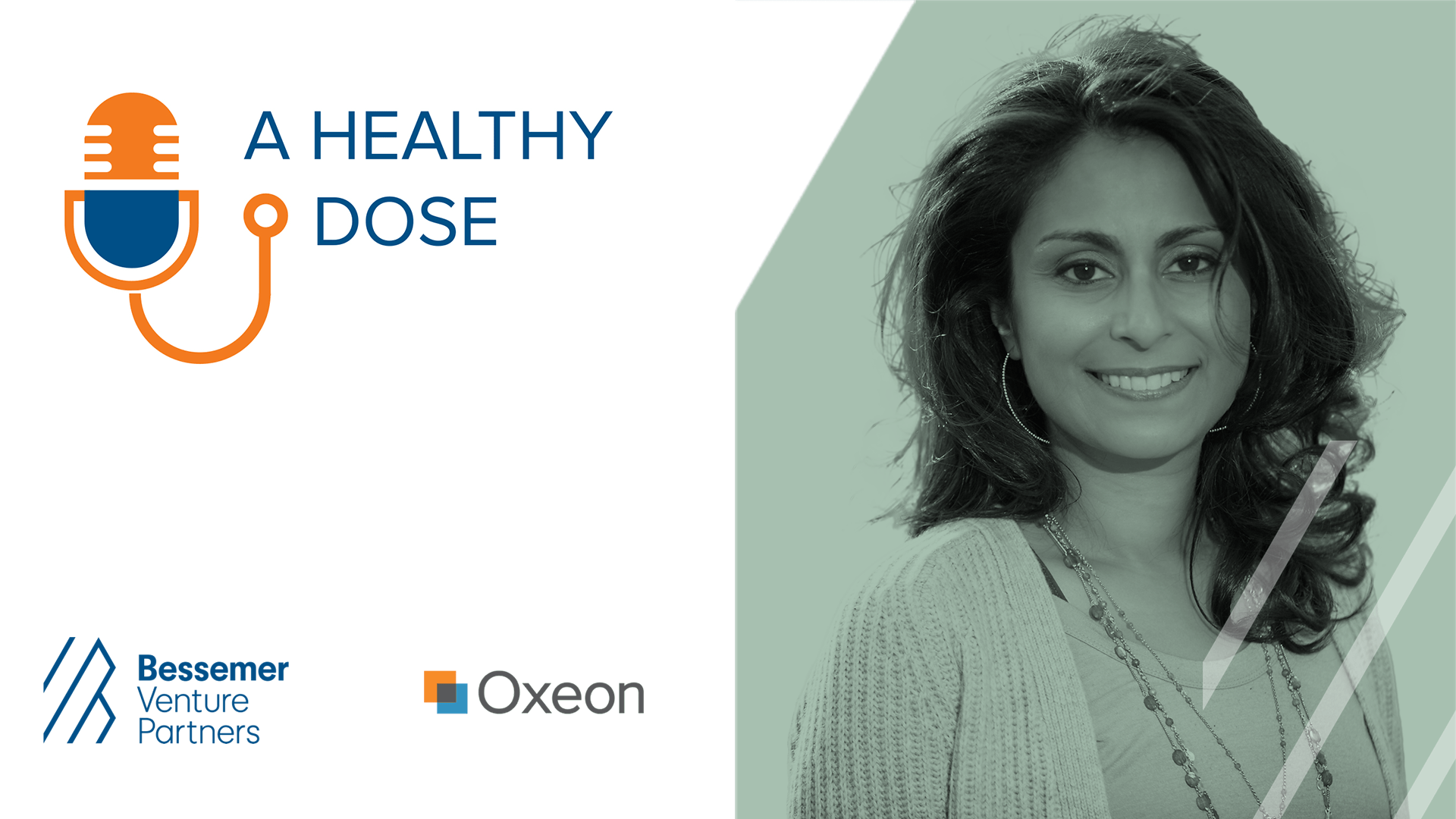
In the fifth episode of the COVID Crisis series, Trevor Price and Steve Kraus chat with Céline Gounder, an American medical doctor and medical journalist who specializes in infectious disease and global health. She was educated at Princeton University, Johns Hopkins Bloomberg School of Public Health, and University of Washington School of Medicine. She is also the host of two podcasts, American Diagnosis and EPIDEMIC Podcast.
In this conversation, Céline answers questions, such as:
- What actually is a virus? “A virus is an agent, a germ, that can hijack your host cells, your body cells, in order to replicate itself. It can't live on its own. A virus hijacks all of the enzymes and proteins, etc. that we use in our cells to replicate and the virus uses that machinery to replicate itself,” Céline explains. “Once it uses the cell, like a little manufacturing plant and produces its “big shipment, it bursts out of the cell and releases lots of new viruses, which then go on to create their next little manufacturing plant in another cell.”
- How potent is COVID-19? “This particular COVID-19 is not as deadly as SARS and MERS. (If a virus is much more deadly, then it sort of stops with that host much more quickly because they get sick and they're not able to pass it on.) But then you have diseases like the common cold that are caused by coronaviruses, which are far less deadly but very transmissible. COVID-19 is somewhere in between where it's very infectious, but it doesn't kill off every host it has, and we’ve learned that 25% don’t seem to have symptoms at all,” said Céline.
- How is this virus impacting the public disproportionately? “In terms of men versus women, we do know that there are some immunological differences between the two. Women are also at lower risk, at least until they go through menopause. Women are also at lower risk for cardiovascular disease, and we know that cardiovascular disease is actually a major risk factor for severe COVID disease. So there’s something immunologically as well as hormonally that's contributing to the gender differences,” Celine explained. “In terms of the race differences, we do not think that is a genetic issue. (We don't have any evidence for that right now.) We think that’s because of baseline health disparities, which we also saw in HIV, as well. For example, when HIV first emerged, it first hit the gay and trans population, and then spread out from there in concentrated populations that already faced health disparities. Some of that is from living in poorer neighborhoods, less access to education and quality healthcare. All of those things compound and leads to what we’re seeing. If you look at New York City data per capita, the highest mortality from COVID-19 is in the Bronx, and that is completely predictable, given social determinants,” she continued. “If you look at where the worst health disparities are and then if you look at the total number of cases, Queens has the highest total number of cases. Again, that makes sense if you look at the population distribution, who lives in Queens, and what kind of work that they have to do. Many people in Queens are working in service jobs where they don't have the luxury of telework for any number of reasons, right? So they are still having to go out there and are continually being exposed. It's not that people living in certain neighborhoods are innately more at risk for infection or disease, it's that they have to go out, and then they are exposed.”
Mudit Garg of Qventus and Karyn Baum of Fairview Health Services on preparing for patient surges
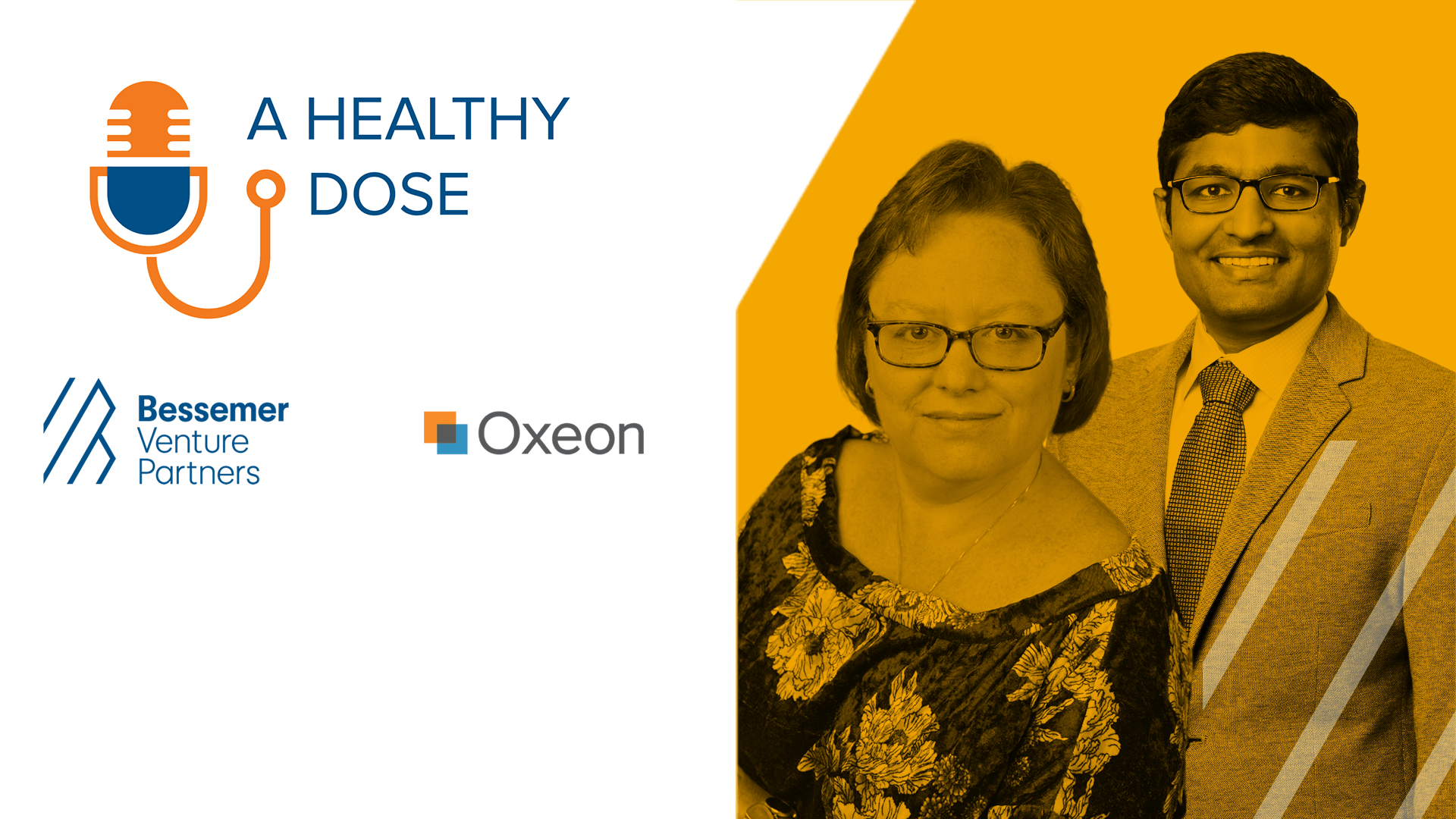
In the fourth episode of the COVID Crisis series, Steve Kraus and Trevor Price sit down with Mudit Garg, founder & CEO of Qventus, Inc, and Karyn Baum, VP of System Clinical Operations at Fairview Health Services. Together they talk about how healthcare systems are grappling with unprecedented patient surges during the COVID-19 pandemic. "Regardless of location, after seeing what's happened in New York, Italy, and beyond, hospitals can't afford to not be prepared to expand capacity and especially ventilator capacity," said Mudit Garg.
Top takeaways include:
- Why hospitals across the U.S. are experiencing drastically different capacity needs: “It's a tale of two cities across the country right now. Institutions, for example, in New York have field hospitals being served with thousands of beds, a majority of which are ICU and ventilator beds. That’s a massive undertaking,” said Mudit. “Think about if any business had to double or even increase their capacity by 25 to 30%? It’s not just about the physical asset of doing so. It requires nurses, respiratory technicians etc. However then there are other states have seen a major slow down because of social distancing, the cancellation of elective surgeries, and many of them are seeing record low levels of occupancy. It's the calm before the storm feeling for many places, such as Minnesota. But regardless of location, having seen what's happened in New York, having seen what's happened in Italy, and other places, you can't afford to not be prepared to expand capacity, and especially ventilator capacity.”
- The underreported story about the ventilator shortage: “The hospitals in New York are calling out for ventilators, but they are also calling out for really innovative solutions to get access to respiratory therapists,” noted Trevor. Karyn agreed and elaborated on his point: “Having a bed and a ventilator is necessary, but not sufficient. You also need somebody to run that ventilator, whether it's a nurse or a respiratory therapist or an intensivist. You also need people to draw labs. You need facilities management,” she said. “A hospital is a city of people and it's a huge amount of teamwork. It's the nurses and the respiratory therapists and those folks that are absolutely essential. During this time, healthcare systems have to think about how to have these people work in these environments, but also how to stay healthy in those environments.”
- A doctor’s perspectives on the emotional and physical toll COVID-19 is having on frontline workers: “We're proud of what we've done. We're sad at every patient we lose. Every patient you send home is a victory,” Karyn said. “We've had to have discussions with our family members we never thought we'd have to have, like, ‘Do I need to live separately from you for two weeks so that I don't bring this disease home to you?’ All of this reminds us of why we went to med school and why we love patient care.”
Russell Glass, CEO of Ginger, on mental health awareness
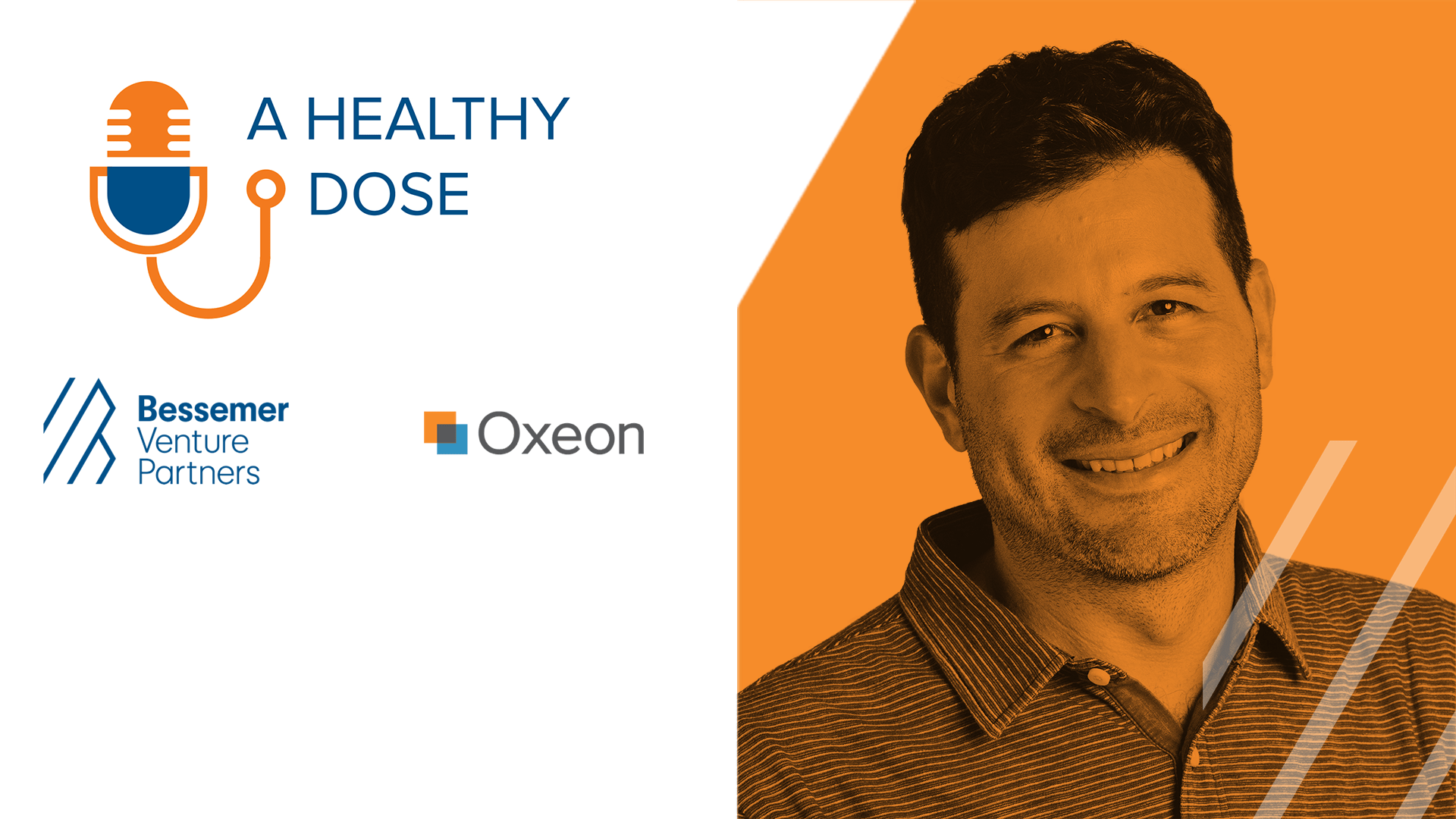
In the third episode of the Covid Crisis series, Steve Kraus and Trevor Price sit down with Russell Glass, CEO of Ginger, to discuss the effect COVID-19 is playing on mental health and how the platform is stepping up to make sure our frontline healthcare workers have access to the mental health services they need. “If you’re looking at the active members on Ginger, we’ve seen a 50% increase from February to March,” said Russell. “We’re also measuring the intensity of these conversations from our care providers, and that is up by 10 to 15% during that same period. We’re just at the beginning, too, as we all move into this new reality.”
Top takeaways include:
- Ginger.io found that 70% of workers claimed that this was the most stressful time of their entire professional career, which includes periods such as 9/11 and the 2008 Recession. Based on a study Ginger did before and during COVID-19, they were able to see the real-time impact the pandemic has had on mental health. Russell told the podcast: “One of the stats we learned last year was that 48% of workers shared that they've cried at work due to anxiety and stress. This year that was up to 60% of workers. There's already an intensifying of what's going on in the workplace.”
- What inspired Ginger to provide their platform for free to all frontline health workers: "The vicarious trauma that this workforce is going through is going to be out of this world; it’s like nothing we’ve seen. It’s pre-trauma, too, so it’s anxiety leading up to knowing that you’re going to battle. It’s during; how do you manage your stress levels while you’re in the thick of it. And then it’s post, too, right? How do you make sure that you recover to go back the next day,” said Russell. “Because of this we launched three initiatives. The first is providing our coaching and content for free to all frontline health workers; the second initiative was just providing content out there that is relevant to the general public for free. Finally, we recognize that enterprises can't make long term decisions right now. They don't know what budgets are going to look like, so we’ve waived annual commitments. So, basically, a business can just get started with us and know that if you need to quit in two months, that's fine.”
- Why COVID-19 is a watershed moment for the future of telehealth and telemental health: “When you actually experience how convenient and just awesome an experience telehealth is compared to going into a doctor's office and all the downsides to that, you're a convert,” Russell said. “It's the kind of product experience that's high friction, but once you do it, you'll never go back. We learned from our research that about 38% of employees have tried some sort of telemental health or some sort of activity online for their mental health. Forty percent of those people tried it for the first time in the last four weeks.”
Lonny Reisman and Lori Bernstein, founders of HealthReveal, on serving vulnerable populations most impacted by the pandemic
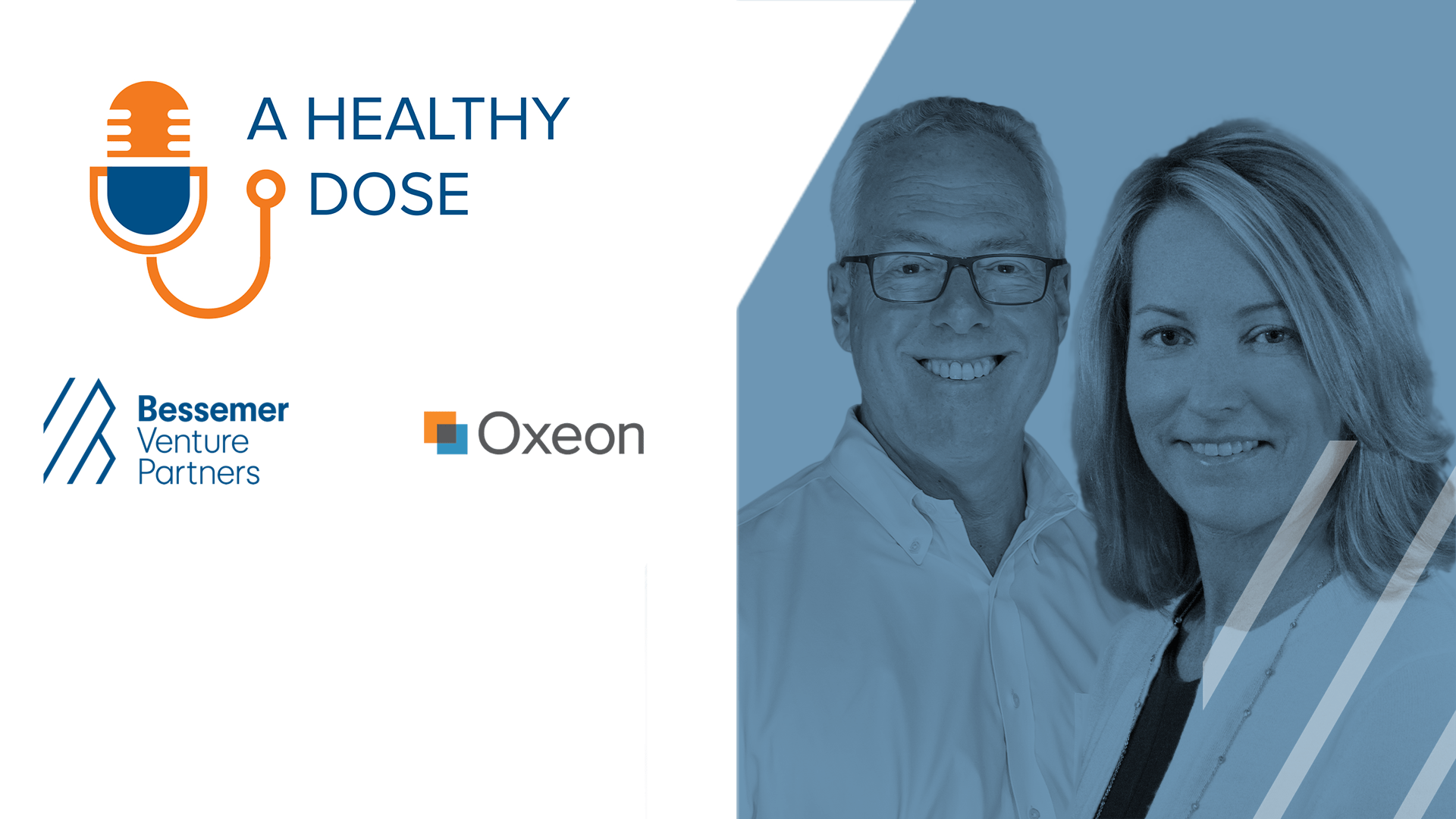
Lonny Reisman and Lori Bernstein are the founders of HealthReveal, a company that reduces healthcare costs while significantly improving quality of life for people with chronic disease. “We are in the business of trying to optimize chronic care management for health systems and patients,” explains Lori Bernstein. In the second episode of A Healthy Dose’s mini-series, the founders share what they’re seeing in terms of risk stratification as it relates to the Corona virus.
Takeaways from this conversation include:
- Insights into the most at-risk populations right now: “There are two major considerations: One, the socially vulnerable people who simply can't get by day to day without the resources have been developed and applied to support those people. The other characterization I would use is clinically vulnerable, people with chronic diseases, which until recently drove 80-90% of all medical costs and was responsible for a large degree of morbidity and mortality. Those clinically vulnerable people are vulnerable by virtue of their chronic diseases, but also that they're particularly susceptible to bad outcomes in the event that they're infected with COVID,” said Lonny. “If you couple a risk of, say, heart disease or diabetes or asthma or COPD with an infection, those, in fact, are the patients who are deluging the hospitals.”
- New pathways to serving patients outside of the ambulatory environment: “If you think about non-traditional pathways relative to tele-health, there could be a pop up dialysis center, for example, for the person that needs to get their dialysis or they're going to die, or there can be a remote stroke treatment program that one of our board members was mentioning,” said Lori. “These alternative workflows that HealthReveal can tee up based on our chronic condition report can help mobilize resources potentially that can come to bear that are outside the health system.”
- The flaws and opportunities this pandemic is exposing in the traditional brick-and-mortar delivery of healthcare: “What we're seeing is an underscoring of problems that have existed, at least certainly historically. I started my career working with patients with HIV,” said Lonny. “I was an intern in 1981. We saw, again, disparities in access, diagnosis, and I could list all the examples that have reared their ugly heads over the last 40 years. The silver lining is that hopefully we're learning, again, particularly as it relates to access to care for vulnerable populations, that there'll be a change going forward.”
Andy Slavitt on saving lives while we stay at home

Andy Slavitt is the former acting administrator for the Centers of Medicare and Medicare Services. “I made a promise to myself that after I left the [Obama] administration; I wanted to be a helper versus an insider,” he shared on A Healthy Dose. Today he’s a board member of the United States of Care and founder of Town Hall Ventures. In this COVID-19 mini-series on A Healthy Dose, Andy Slavitt shares a grounded perspective on how this pandemic will impact not just the healthcare system, but also the economy and society as a whole.
Critical insights include:
- Why shelter-in-place and quarantine are vital to prevent the exponential spread of the Coronavirus: “When you're chasing something exponential, something that's literally doubling every three days, it's like if you're 20 feet from a speedboat, and you swim 20 feet, and realize the speedboat is further away from you than when you started swimming,” explains Andy. “There was a month and a half that we lost based upon not getting proper tests. If we would have had testing and contact tracing in place, then people could socially isolate, quarantine, and prevent the outbreak, which is what we've done for other outbreaks. That was a function of the CDC telling the commercial labs not to produce tests. It was a function of the CDC not accepting the WHO test. The original sin may be tied to the President who had been tearing down every government bureaucrat in his mind. We saw a bunch of scientists that believed one way and the President was going out and saying the opposite...We've got to navigate from where we are, not from where we wish we were; we have to be focused less on the blame and a little bit more on how do we get ourselves out of this hole.”
- Insights from temperature data analysis and what that means for the projected spread of infection: “New Orleans right now is the hotspot of the world with 67% day-over-day growth. The Florida area, particularly the coastlines, is going to be bad. Detroit and Philadelphia are coming online next. We did some interesting analysis. We have access to real-time temperature data from people who take their temperature every day and they upload it to the cloud, and we're able to compare that to normal flu-like patterns,” said Andy. “We have been able to graph this against actions by governors and local officials to clamp down on social distancing, to enforce stricter and stricter rules on bars and restaurants, and we’re seeing that in those counties there are sharp declines in average temperatures. San Francisco, Santa Clara, had dramatic improvements early.”
- How you can save 41 lives by just staying home: “If you are an asymptomatic carrier and you infect just the average number of people, which is 2.3 people and that cycle goes on 10 times (e.g. each person infects 2.3 other people, and so forth) that’s infection 4,100 people,” said Andy. “If the case fatality rate is approximately 1%—Gates thinks it could be 1% to 3% and in Germany, it’s half a percent— as an asymptomatic carrier you’re responsible for 41 people losing their life.”
- Changes our country will have to practice as a result of this crisis: “With COVID-19, COVID-20, COVID-21, we are going to learn how to deal with infectious diseases in a way, hopefully, better than we ever have before. Getting public health money out of Congress has been virtually impossible,” said Andy. “In the future, we will hopefully do a much better job remedying this. It’s like you touch the hot stove. Our country needs to touch every stove once, but then we get really good about being inventive, and creative, and solving these things. On an ongoing basis, we're going to have as deadly diseases come and go, whether they're seasonal or otherwise and are part of our lives. We'll have vaccinations that sometimes work better than others. This will be a strain much like the flu, except deadlier and more infectious. And, during those periods of time, we're really going to want to watch out for the vulnerable people in society.”
- Parting thoughts on how to help stop the spread: “If you approach this with the spirit of I'm [staying home] with a purpose, I'm saving 40 lives, I'm making a sacrifice for my country, it's not forever. We're going to get through this, the only question is when we get through this, how many casualties will there have been?” shared Andy. “All of us are going to look back on this era of time and ask ourselves, ‘What were we doing?’ We all want to be really proud of what we did. So if that means bringing soup over to an elderly neighbor's house or talking to her through her door or FaceTiming people to check-in, etc. that makes an impact... History has shown that those periods of time when people are uncertain and people are scared, a lot of amazing things happen too during that time. A lot of sad things happen, but a lot of amazing things can happen too.”
Listen to all these insights and so many more in this episode of A Healthy Dose.





